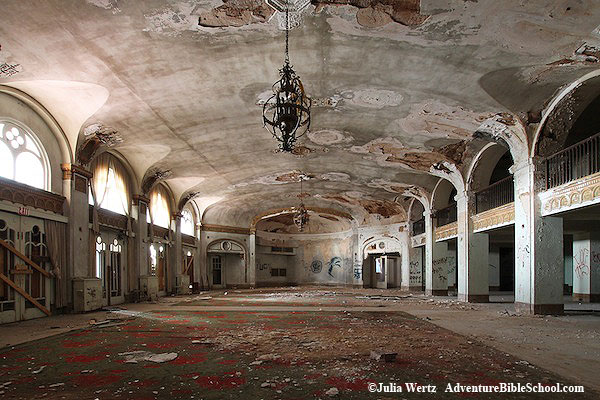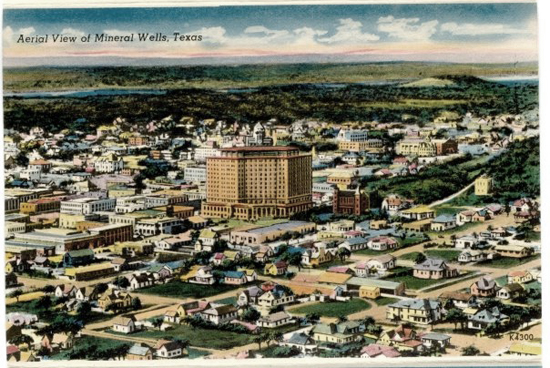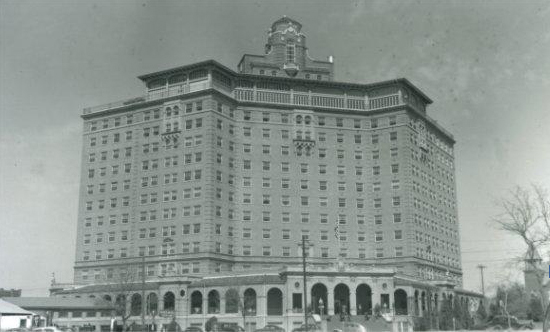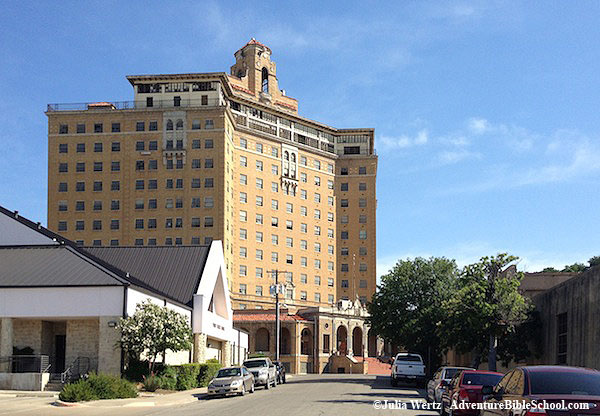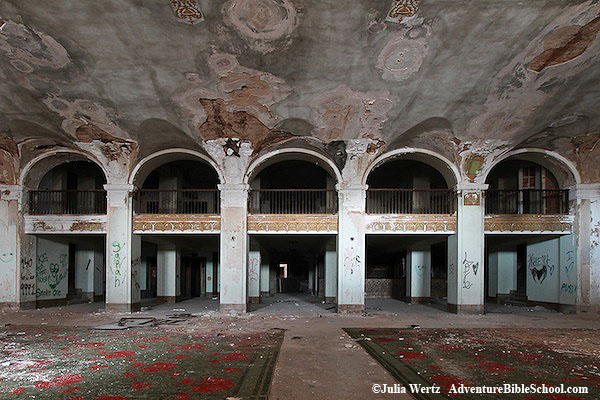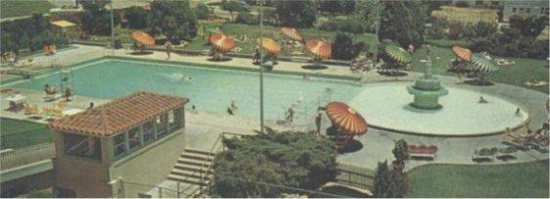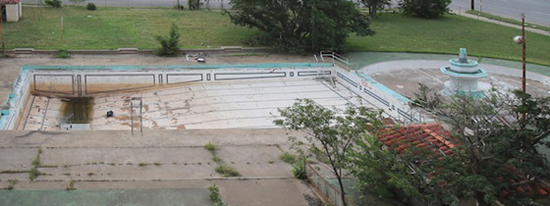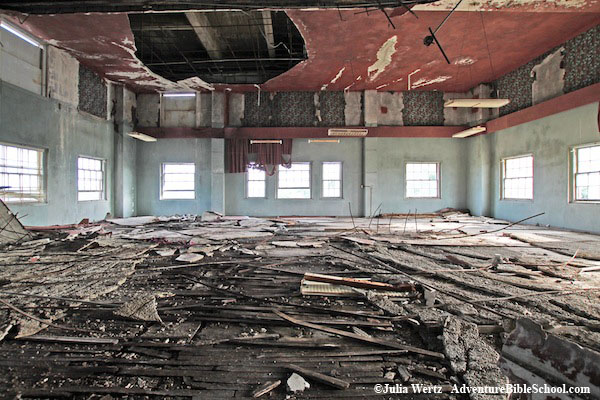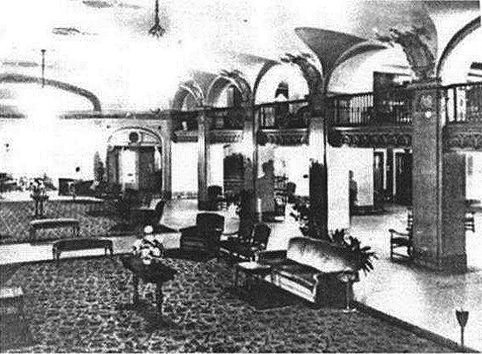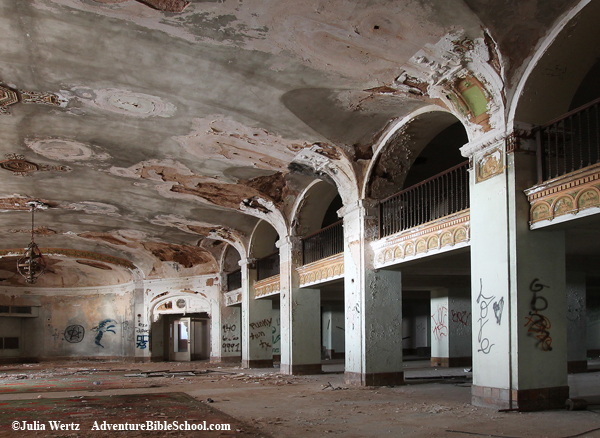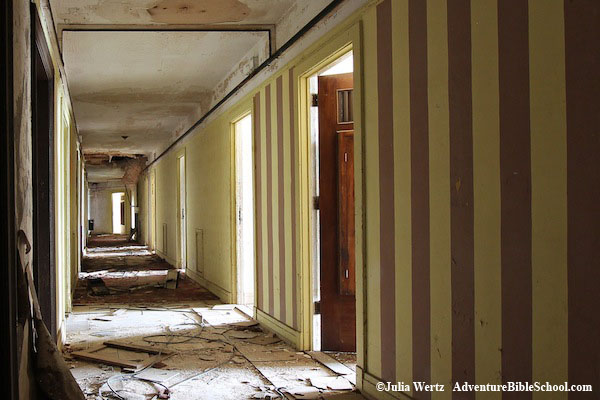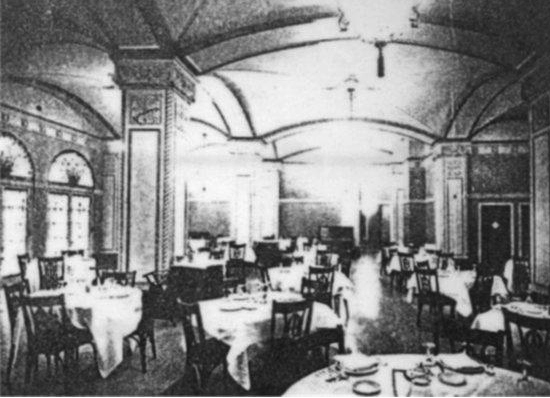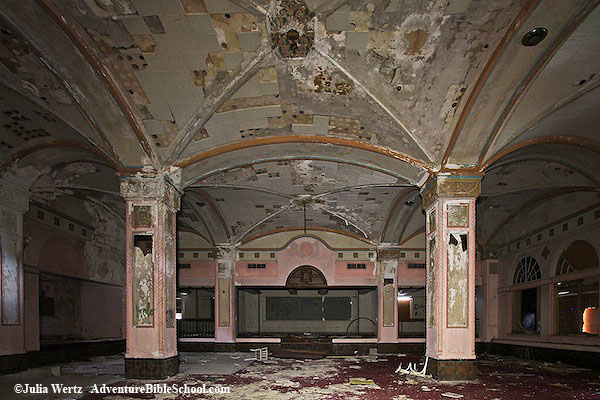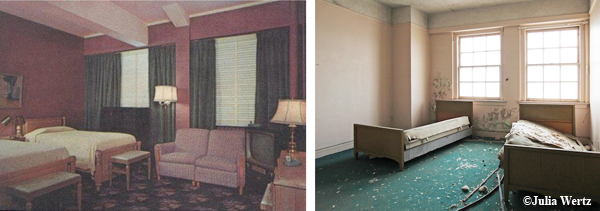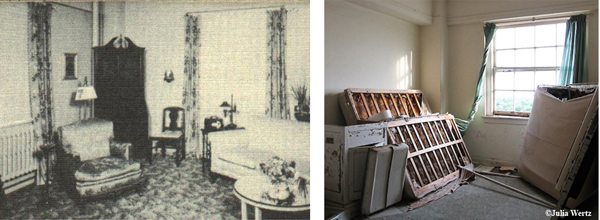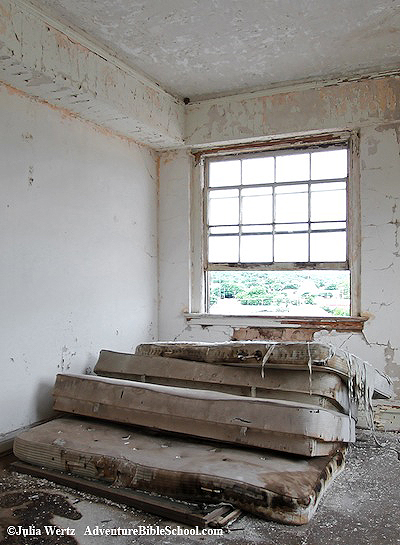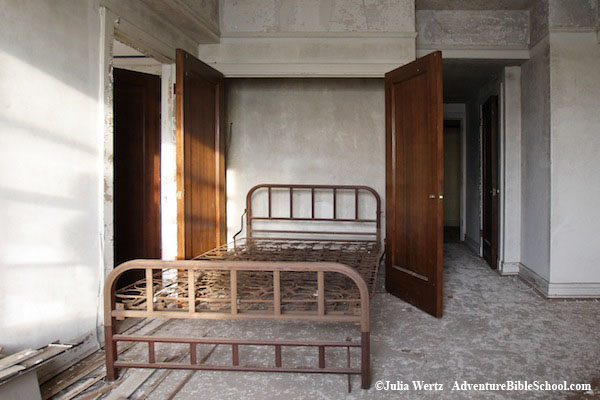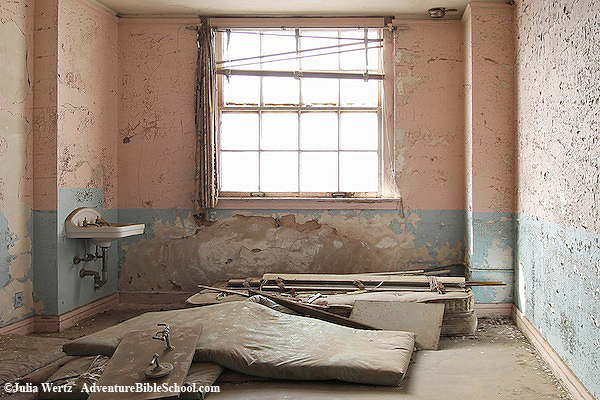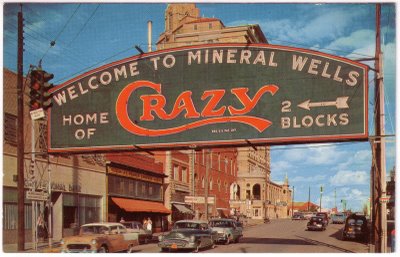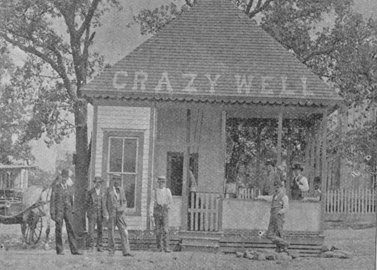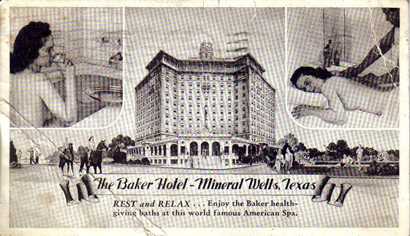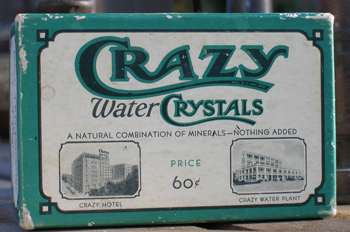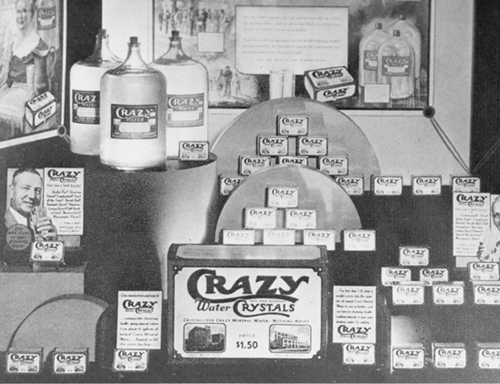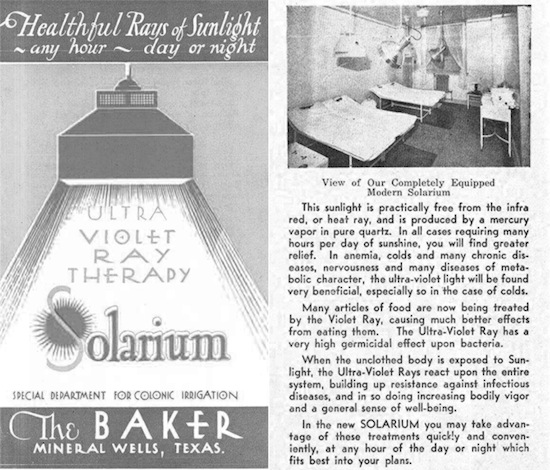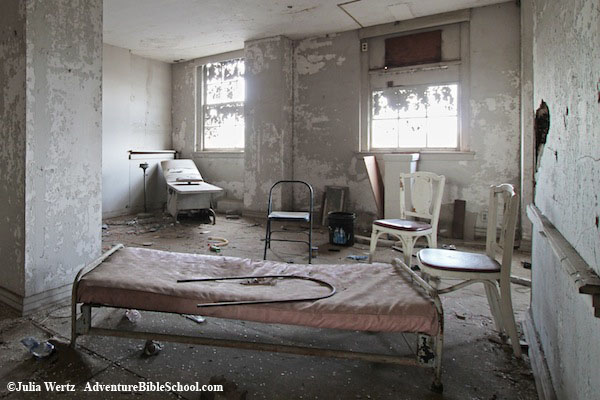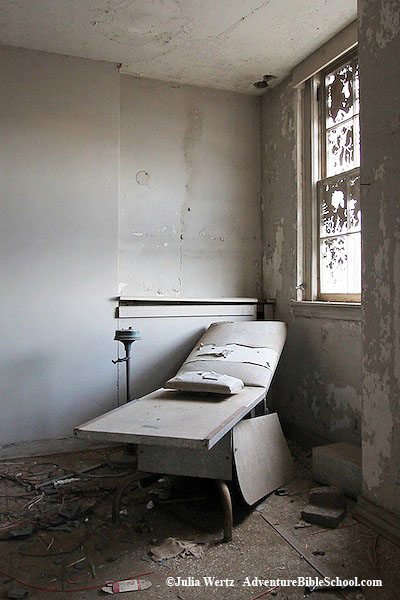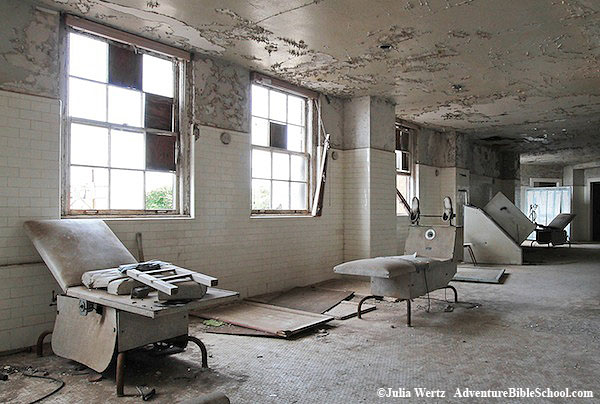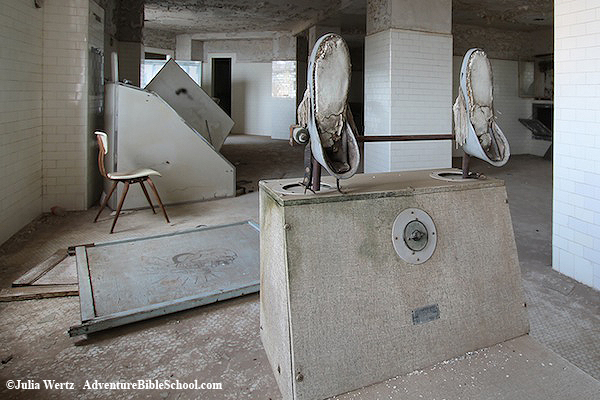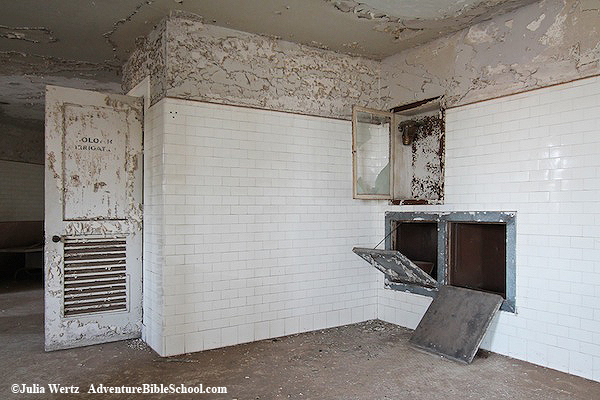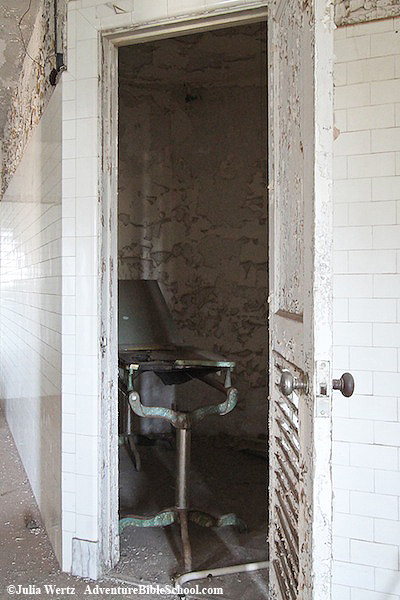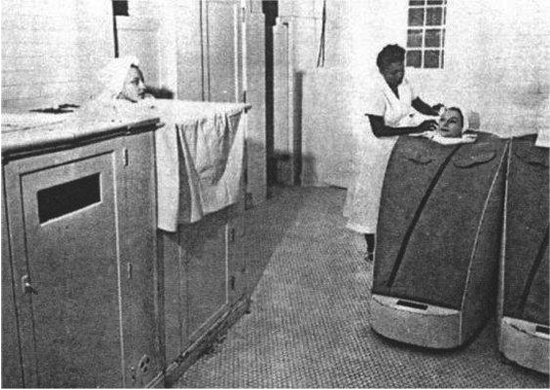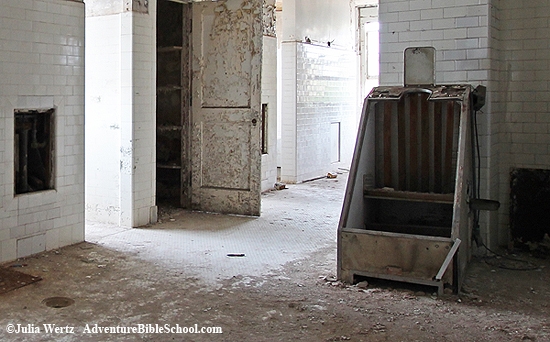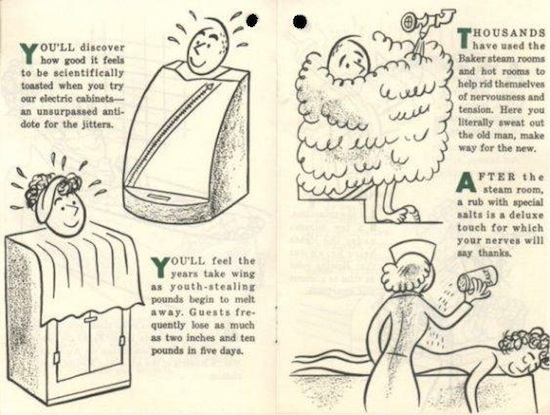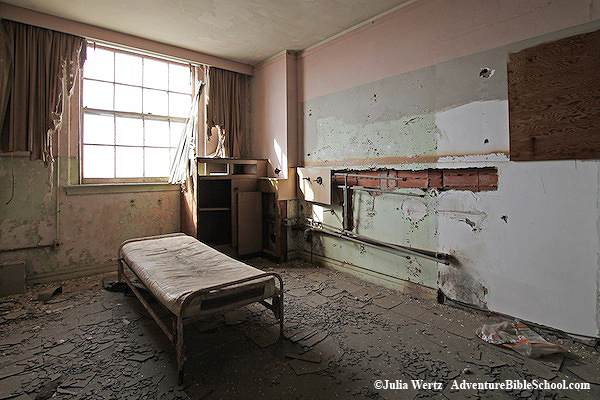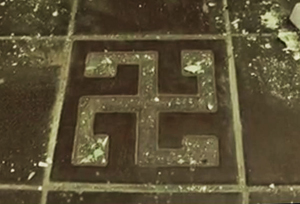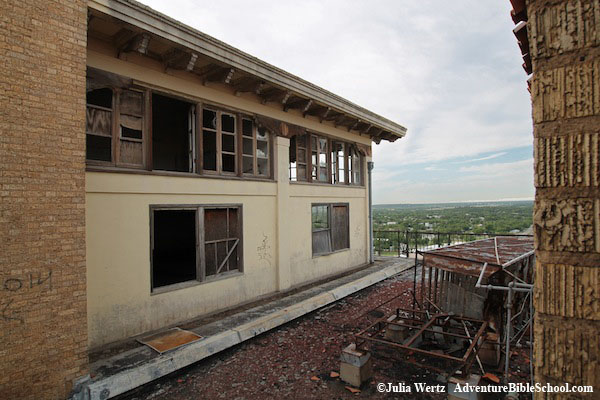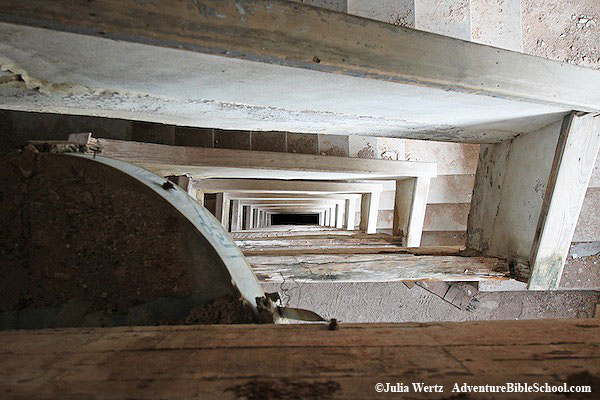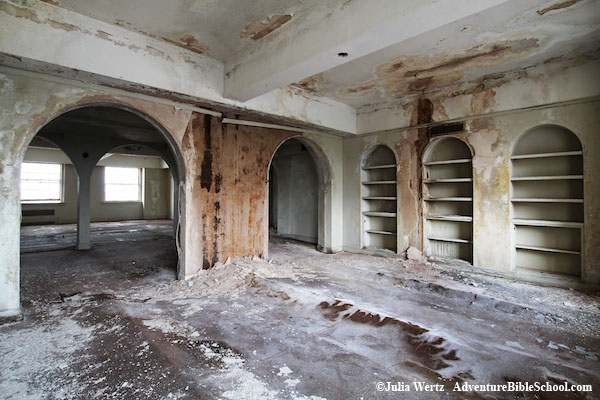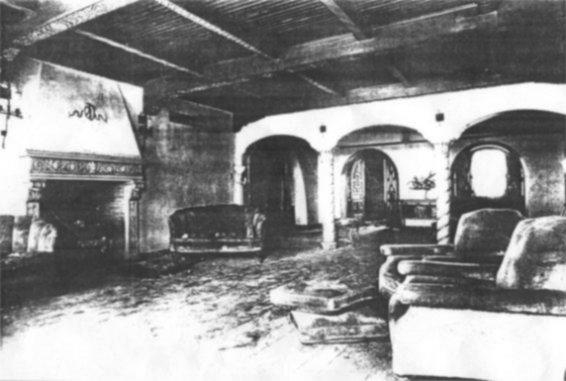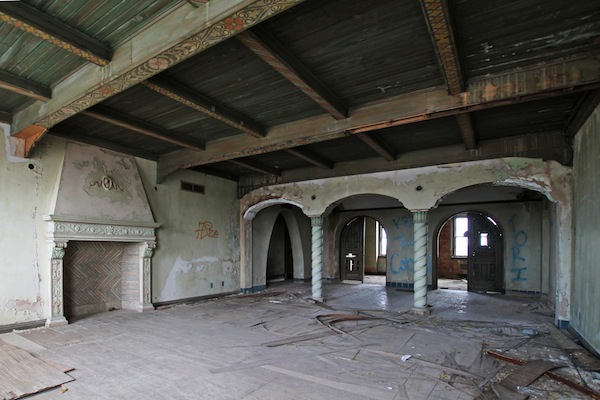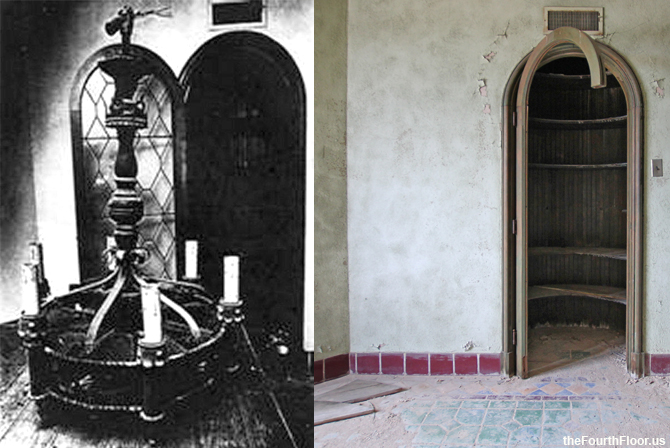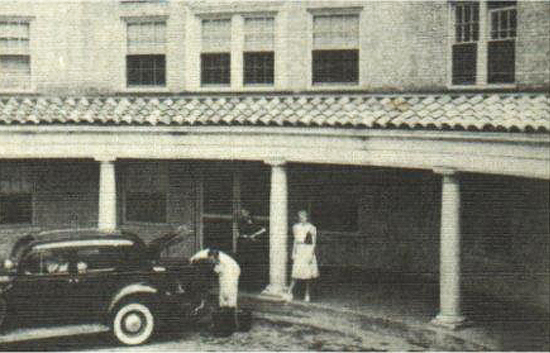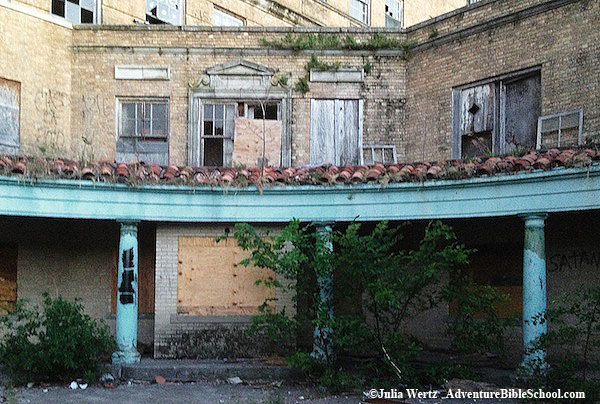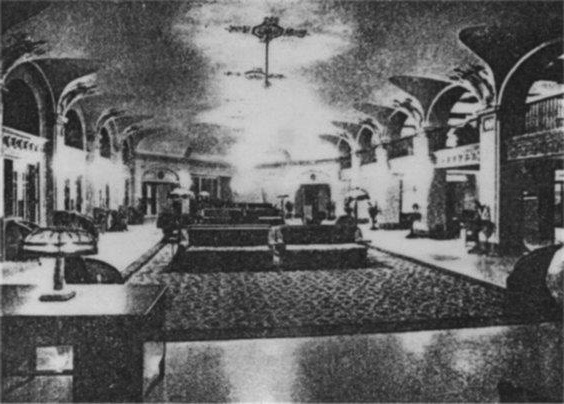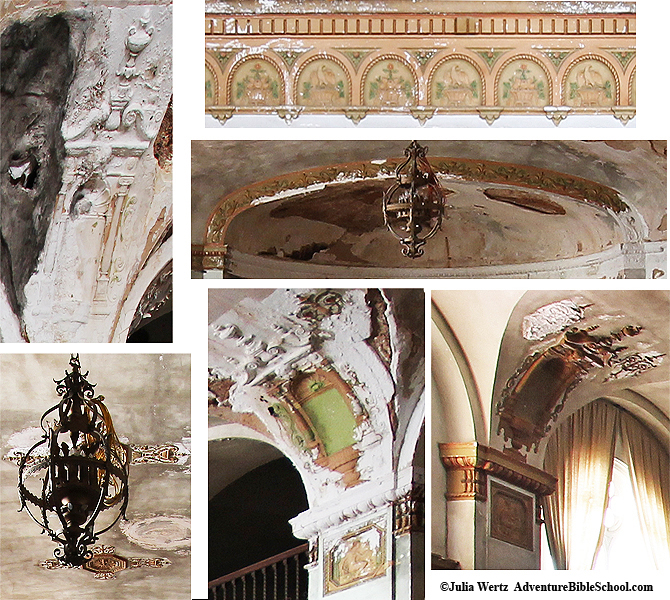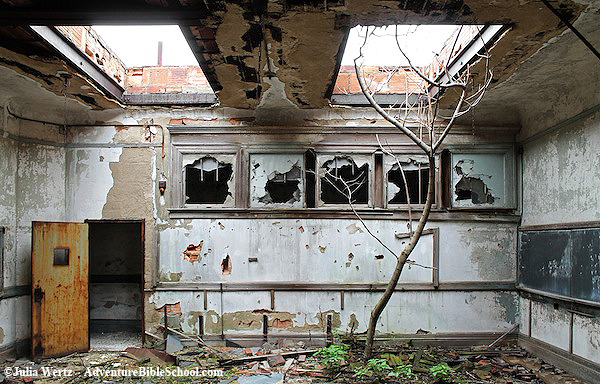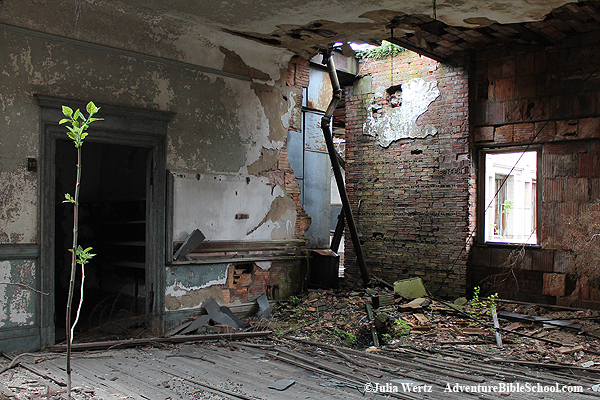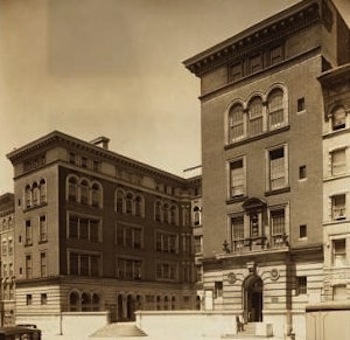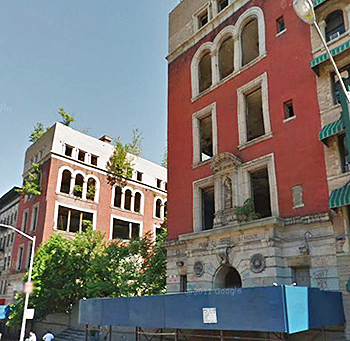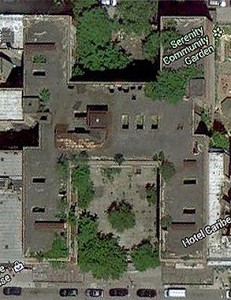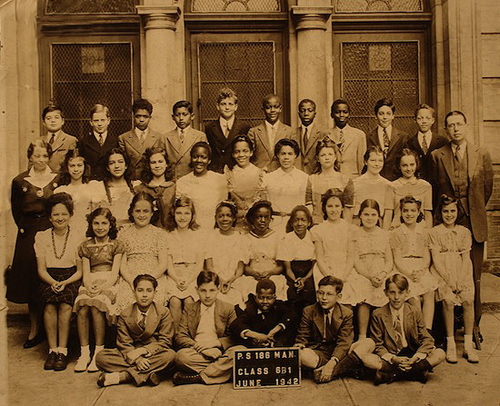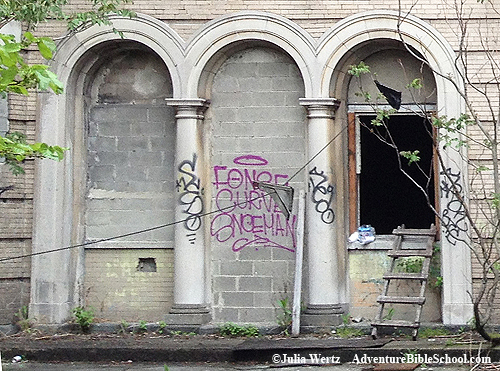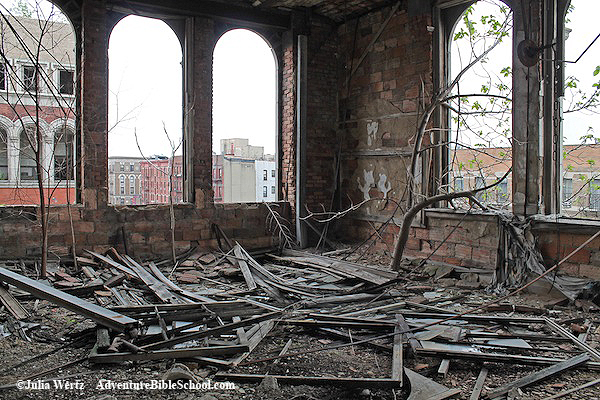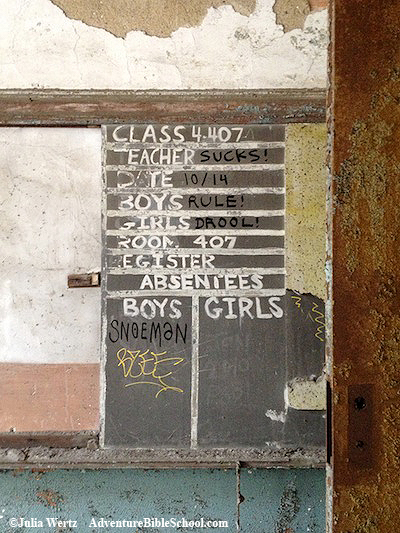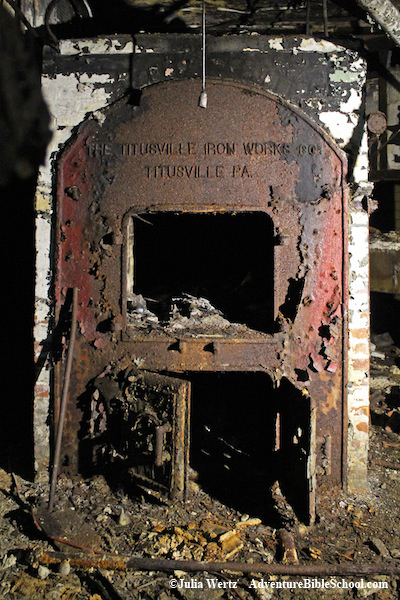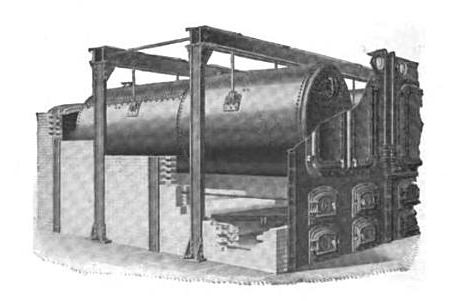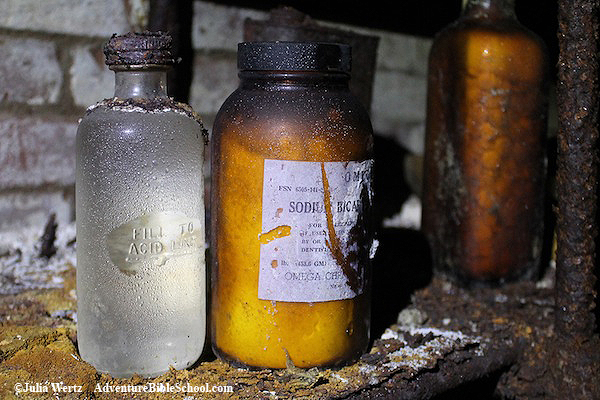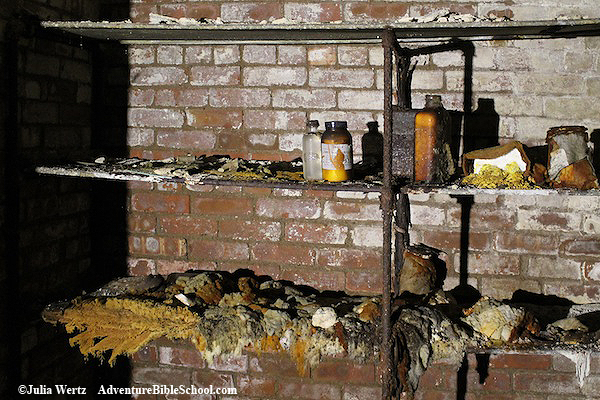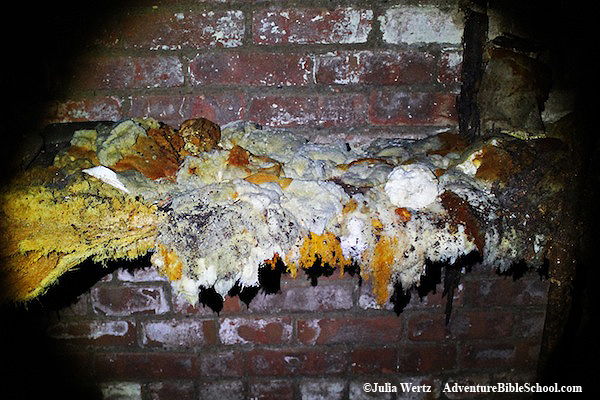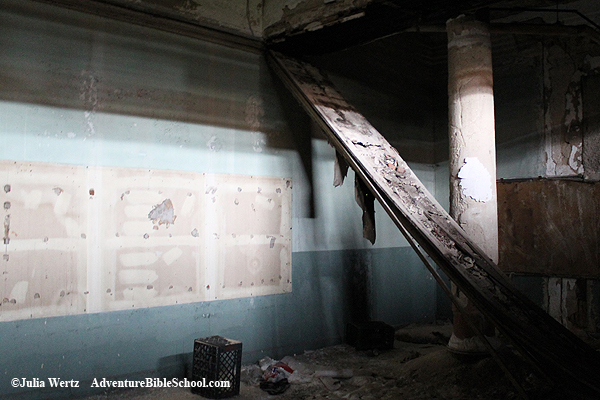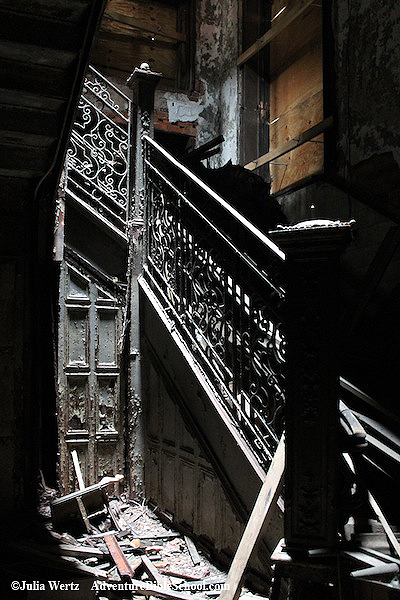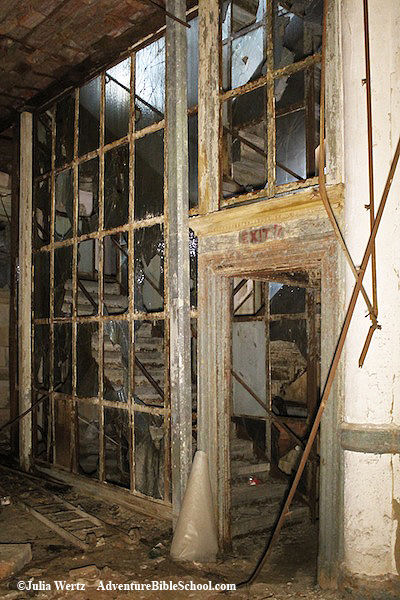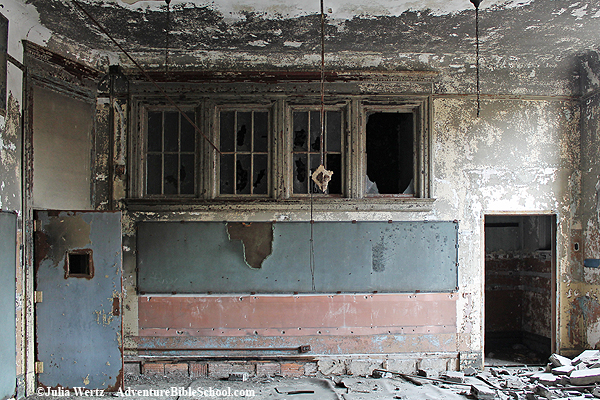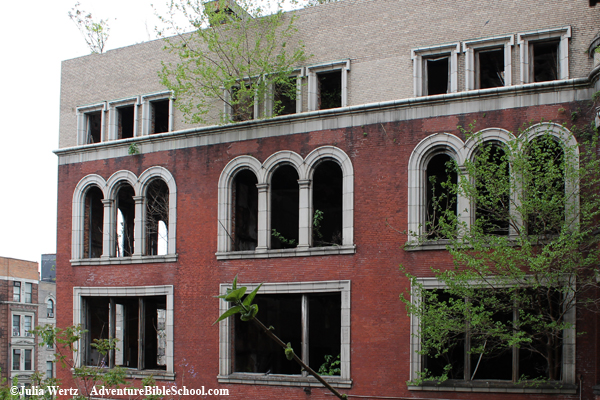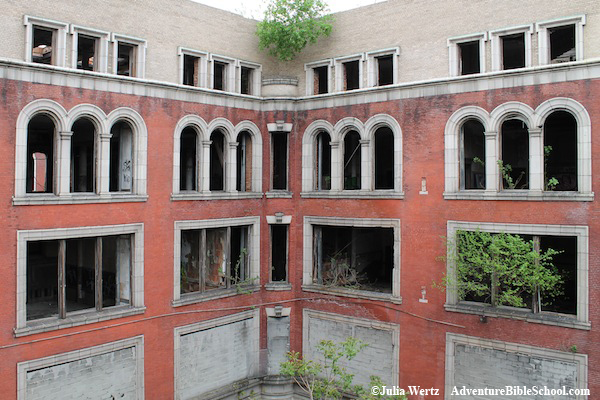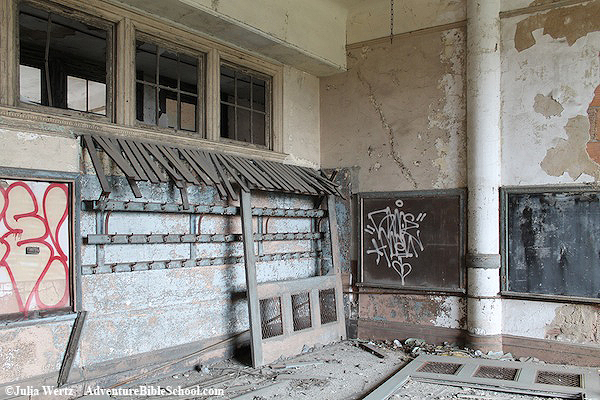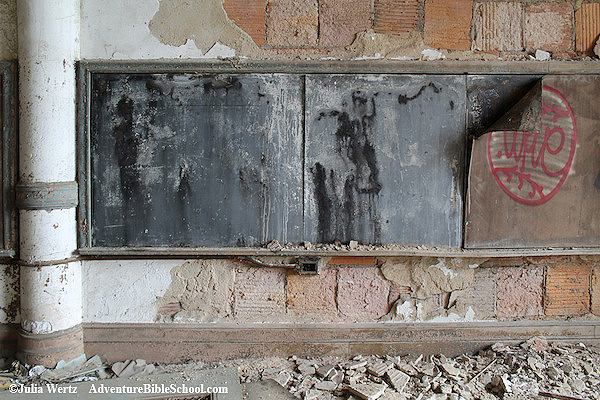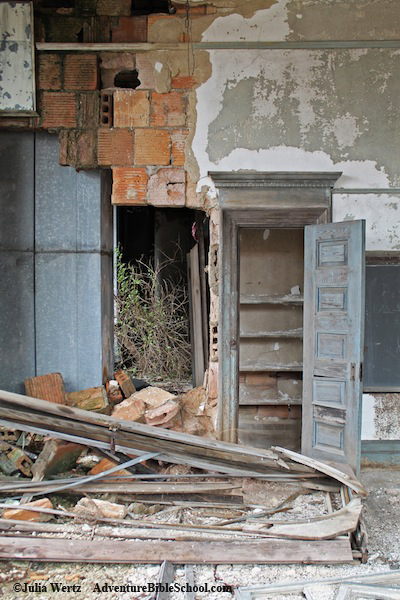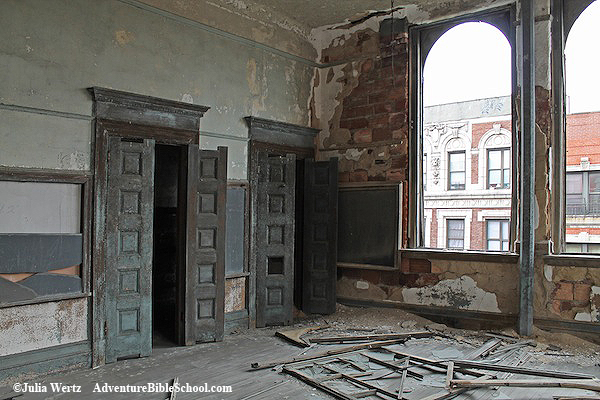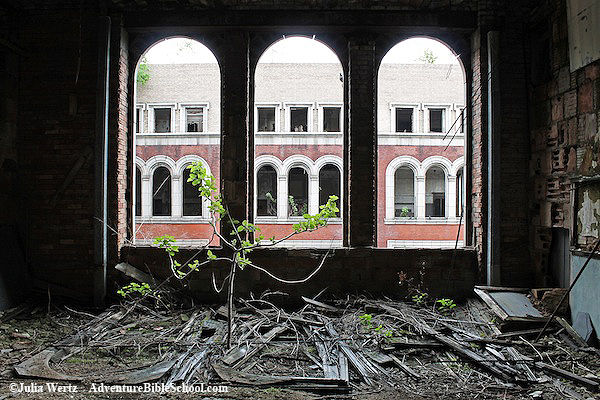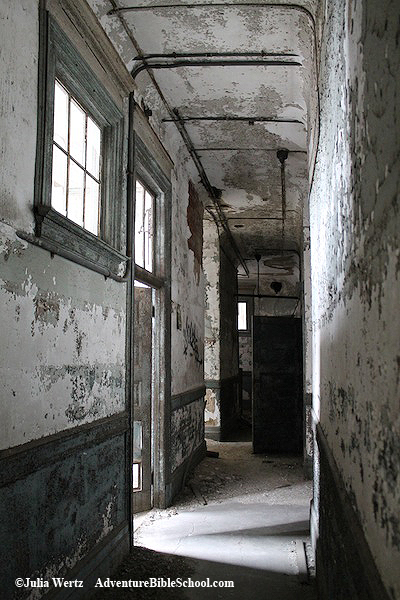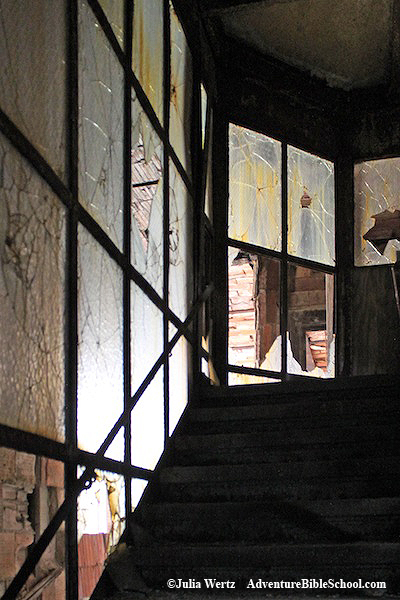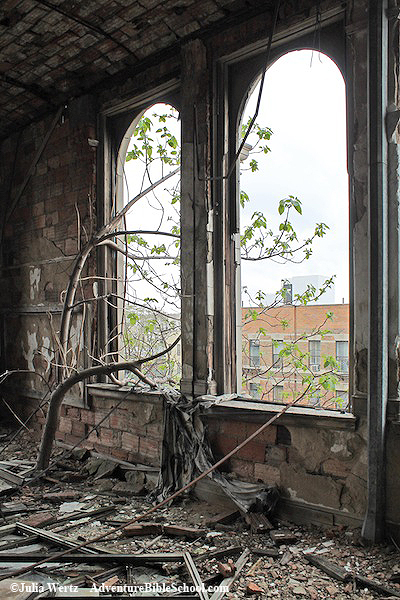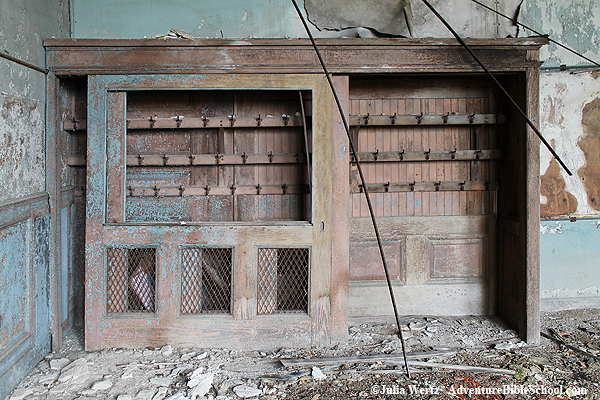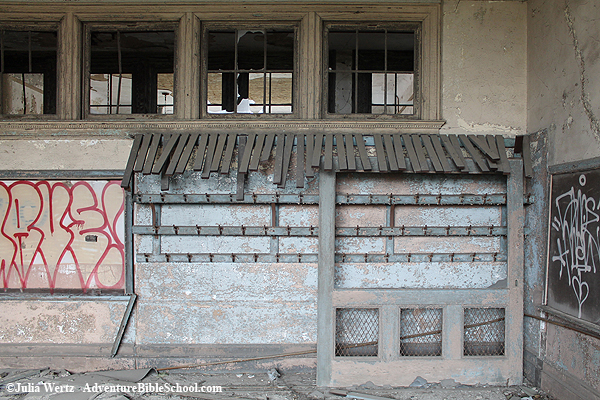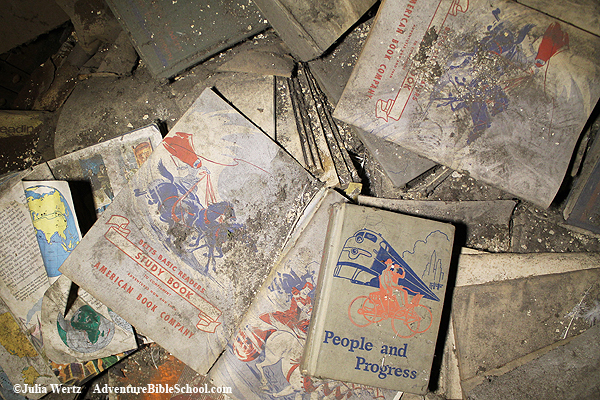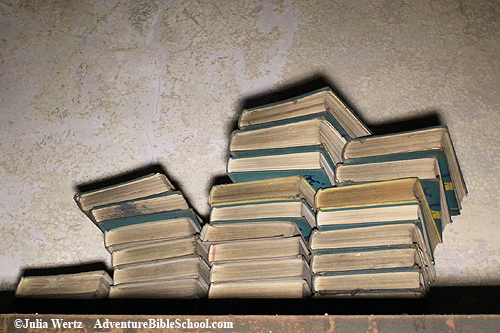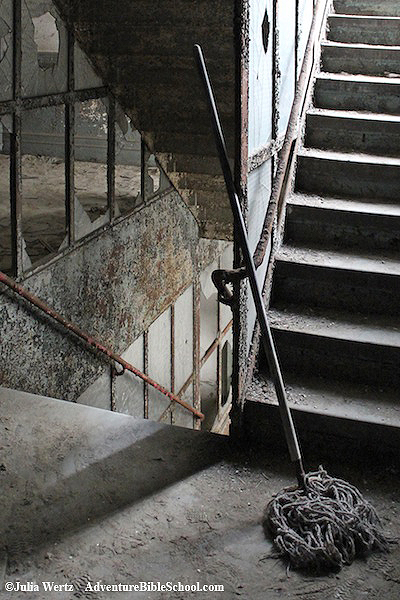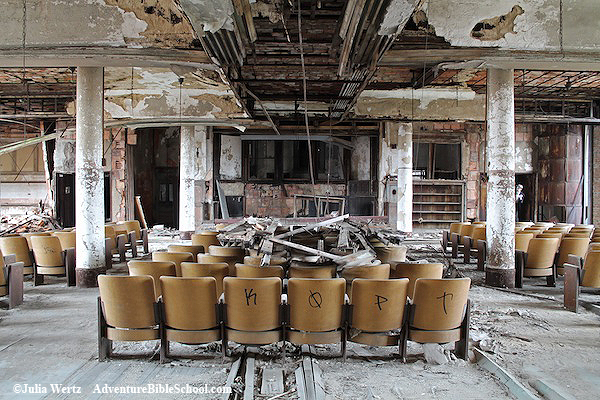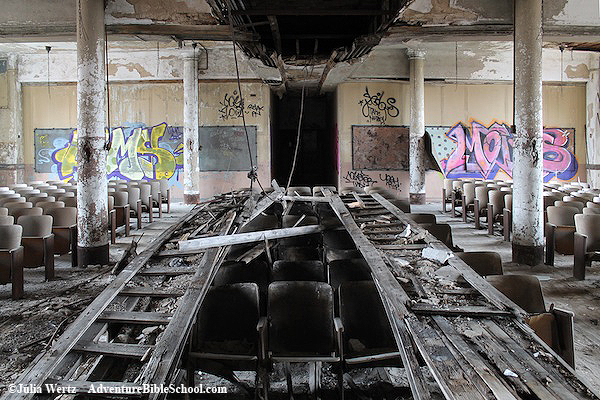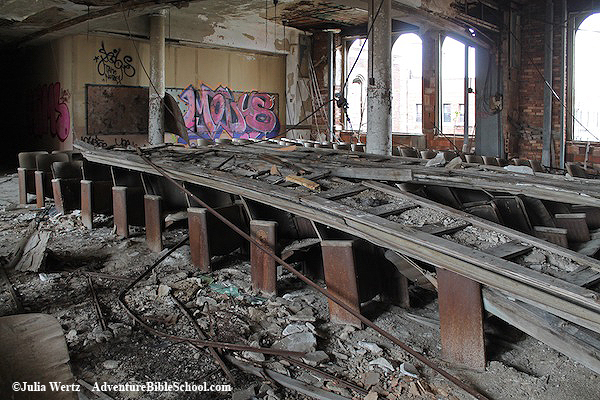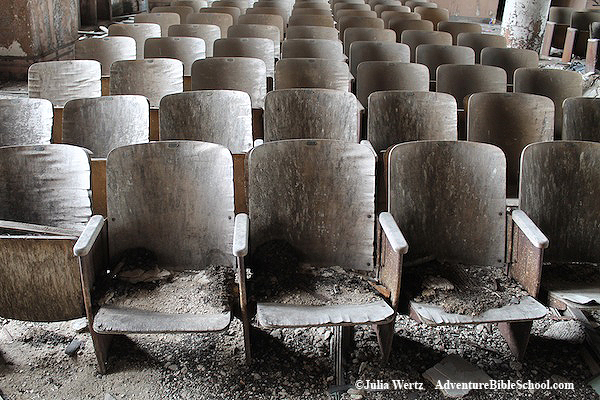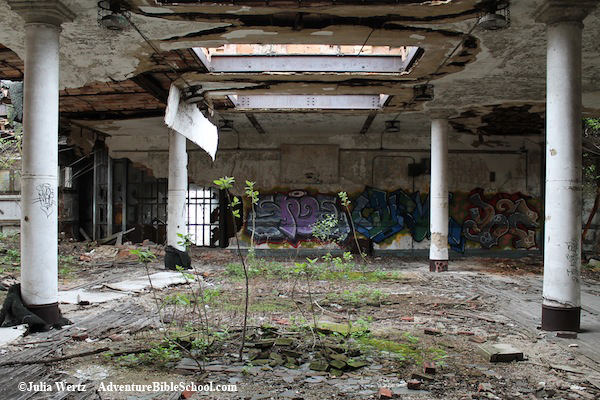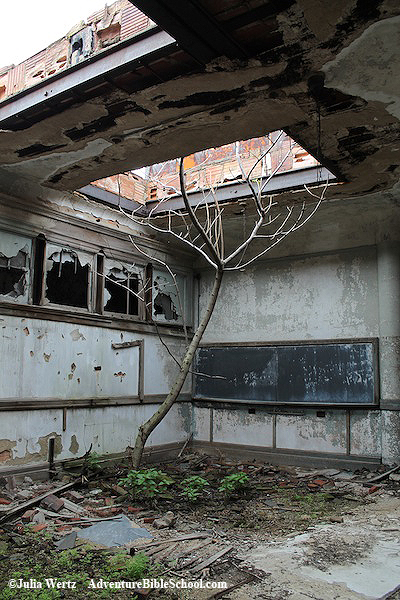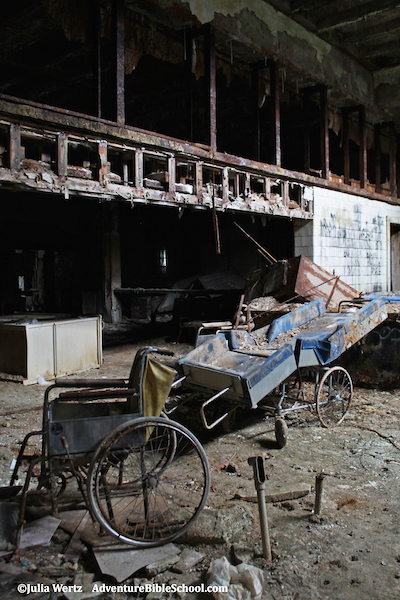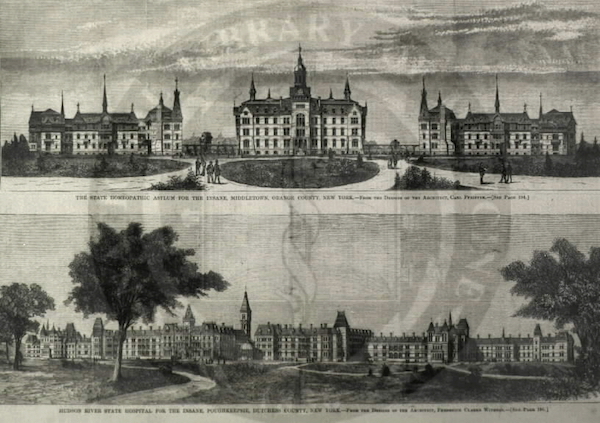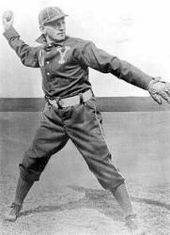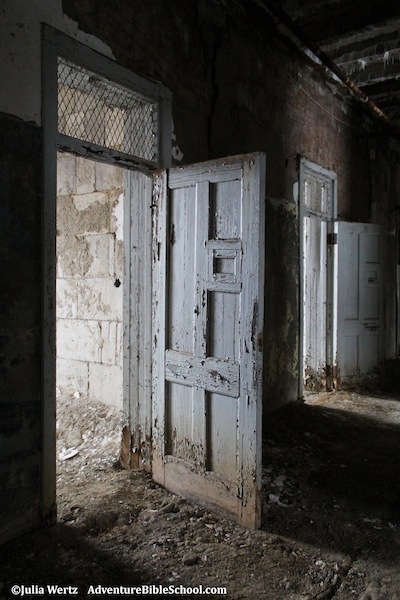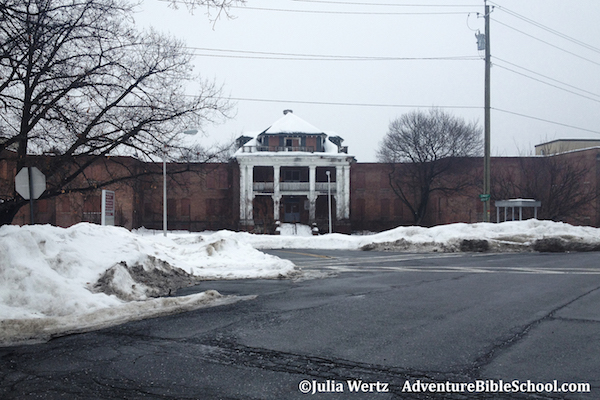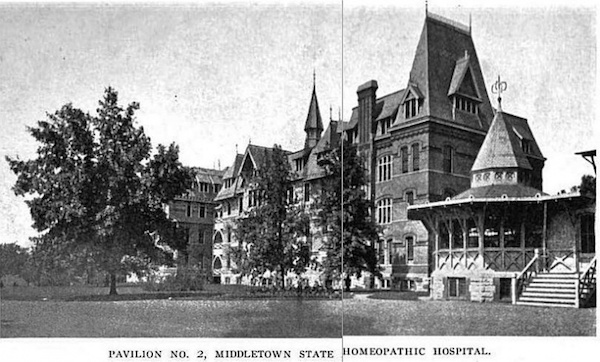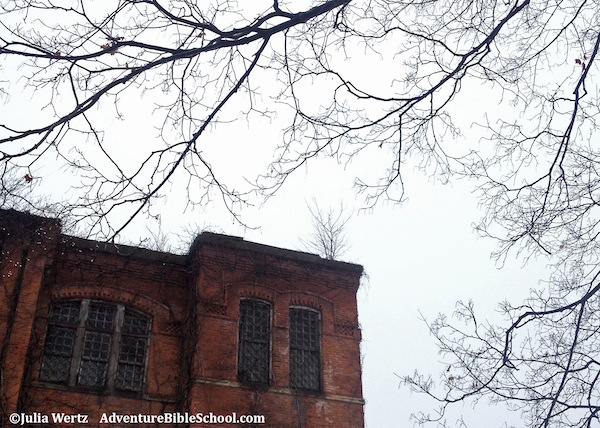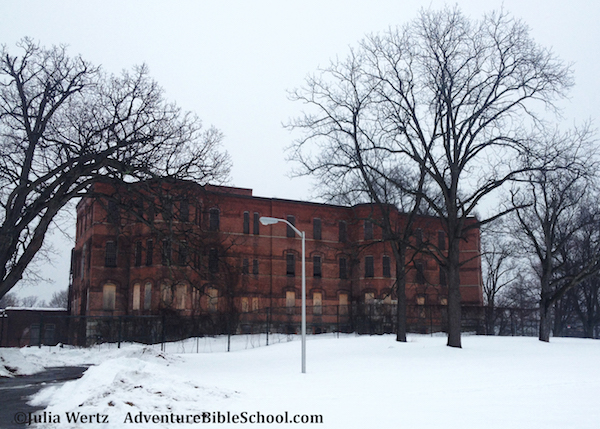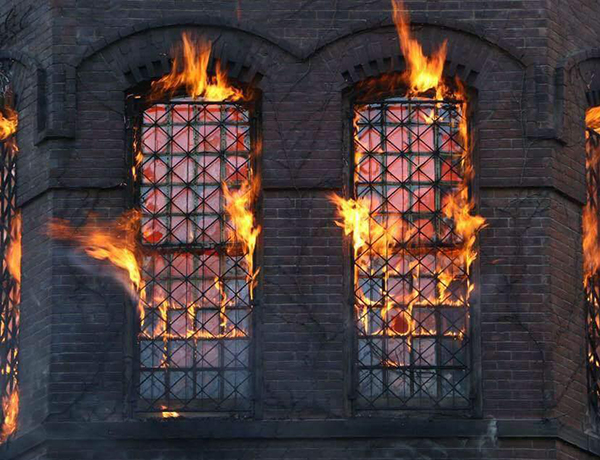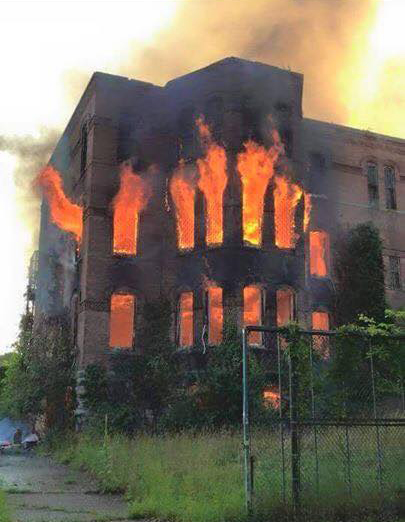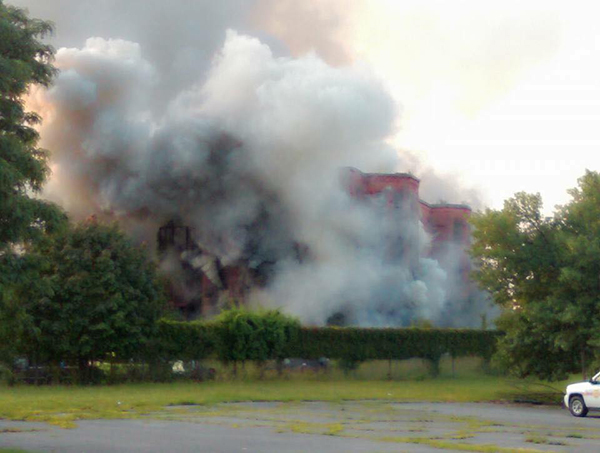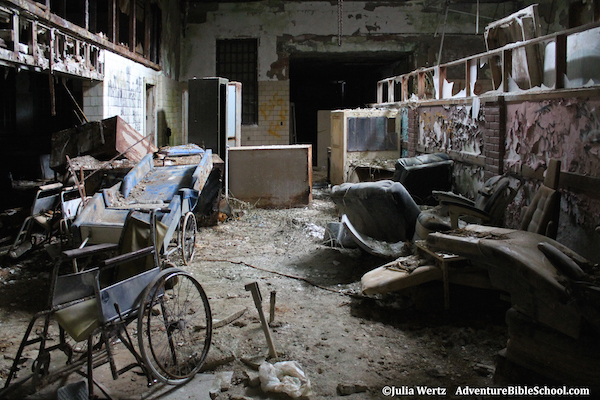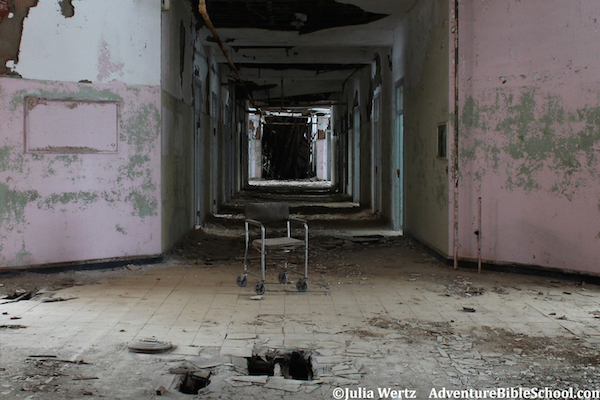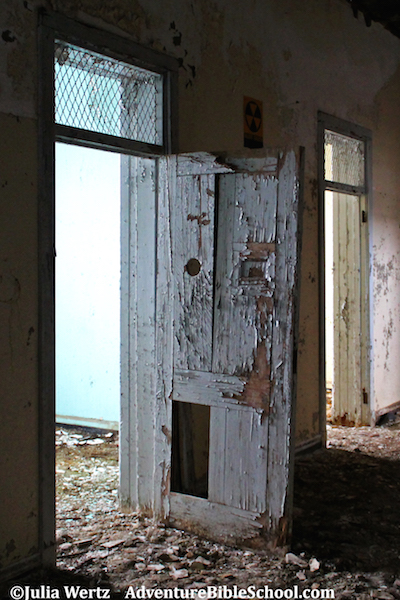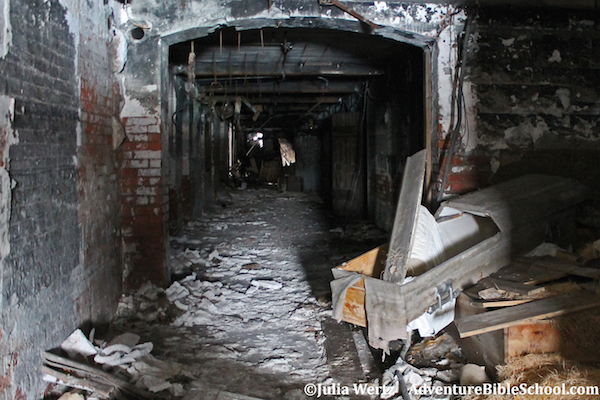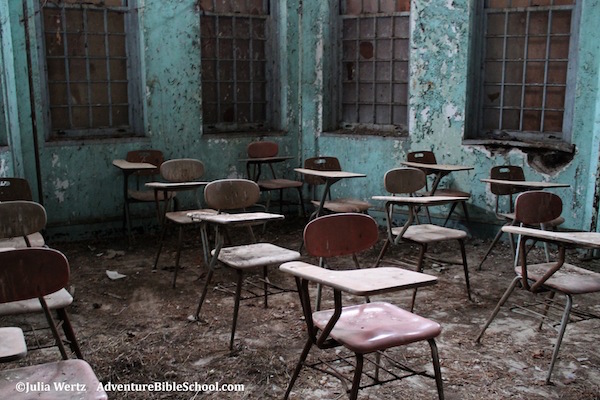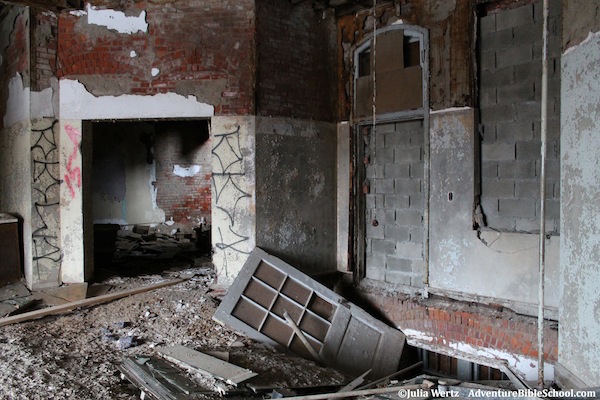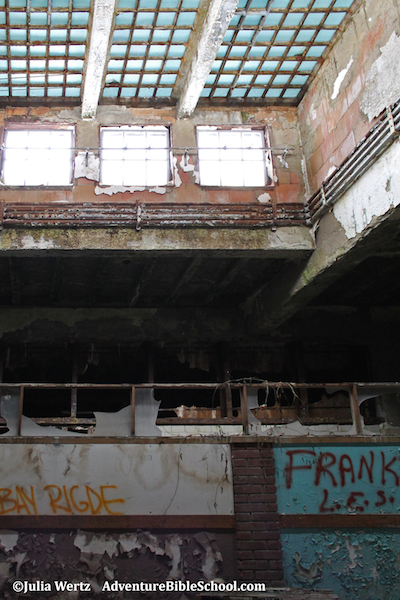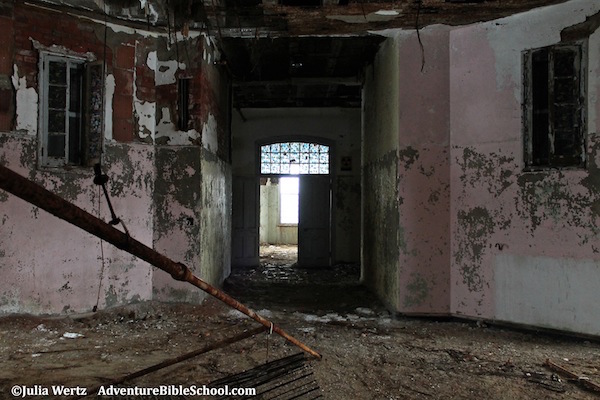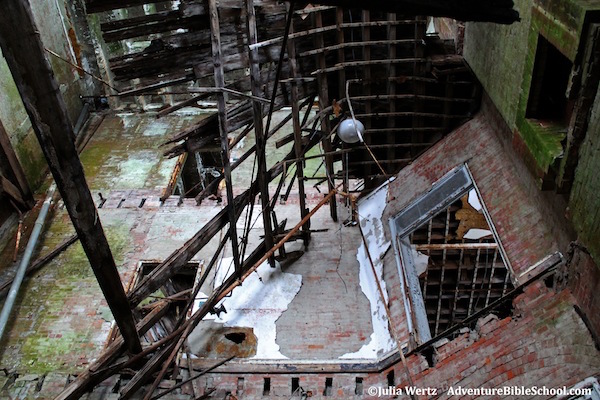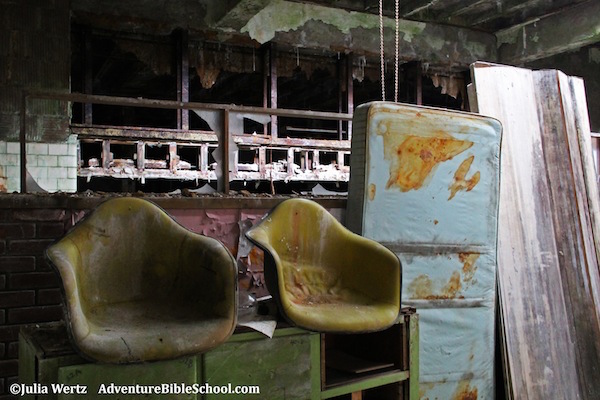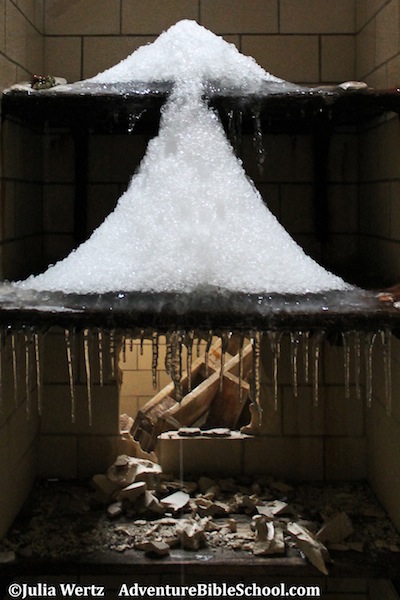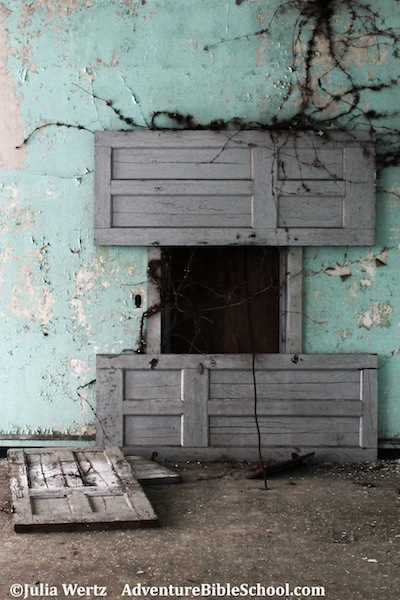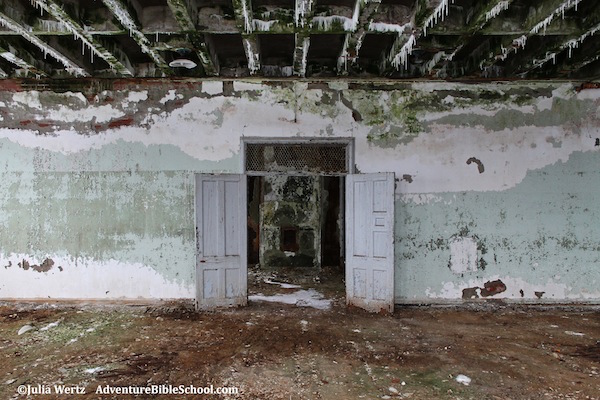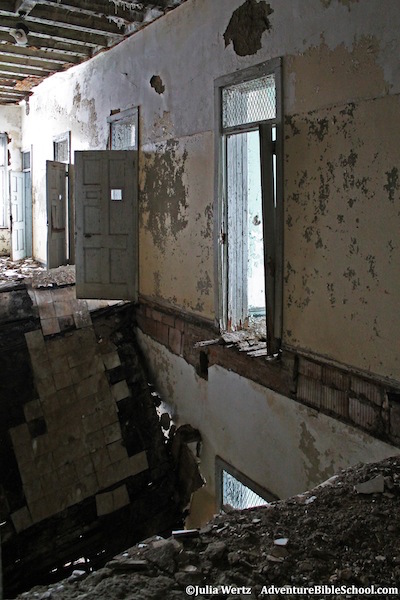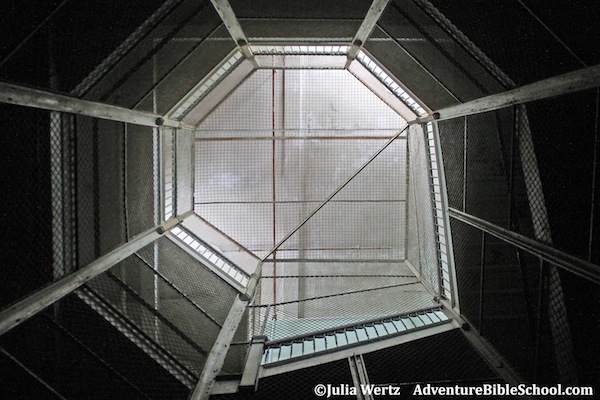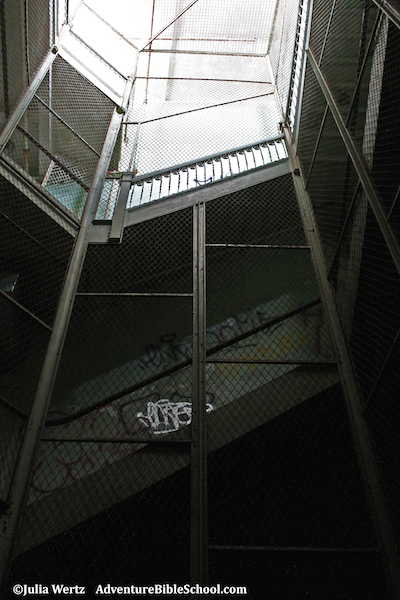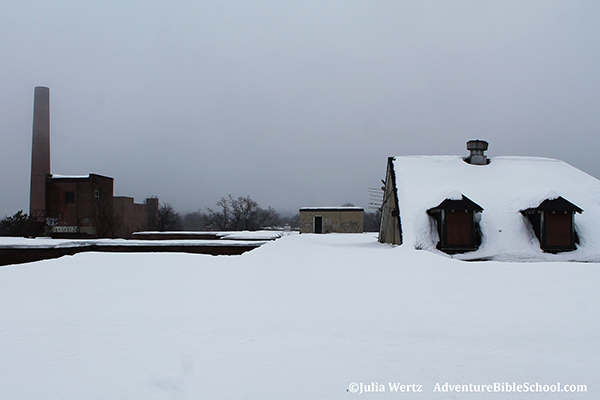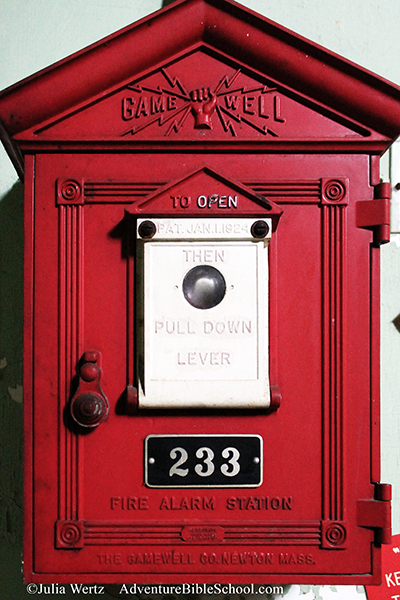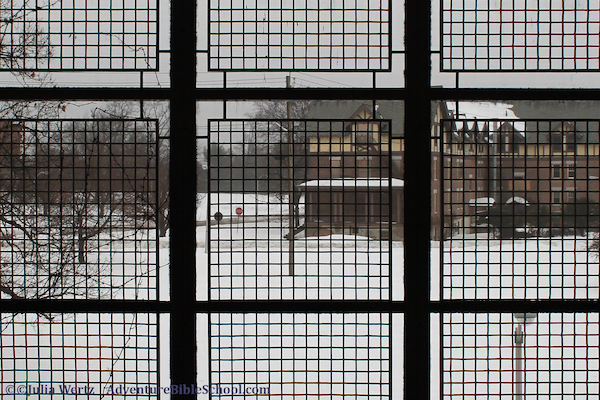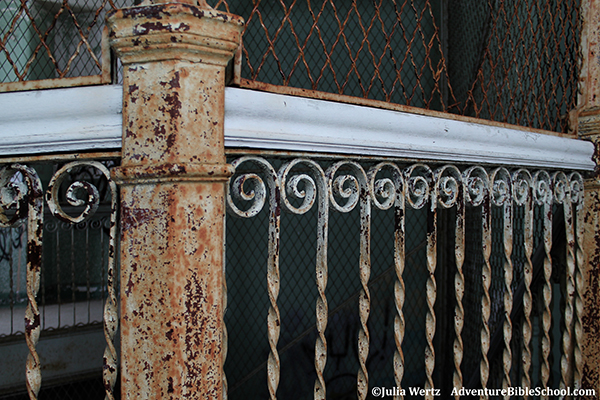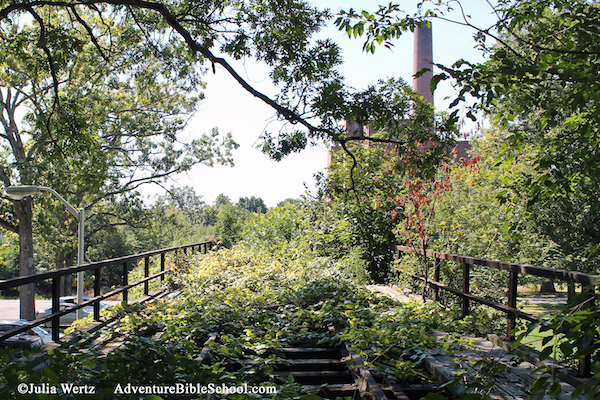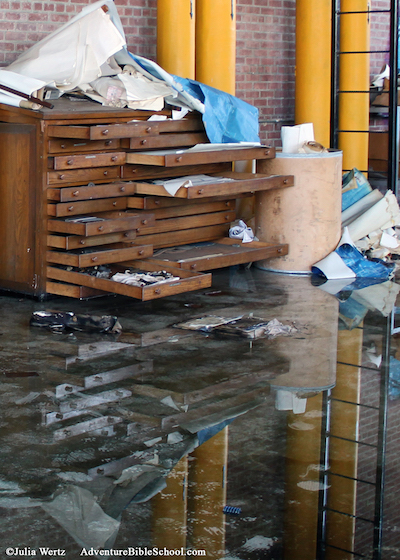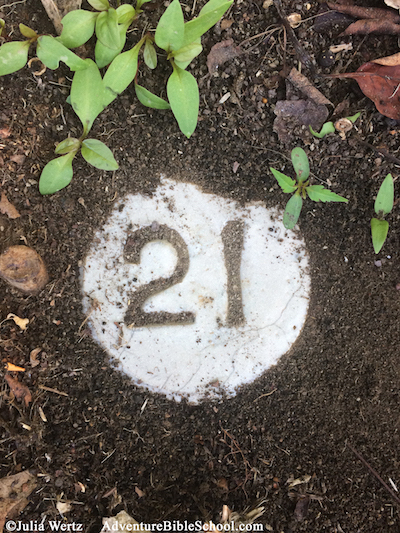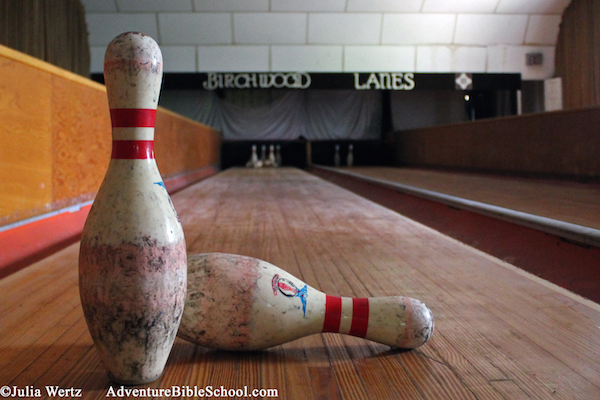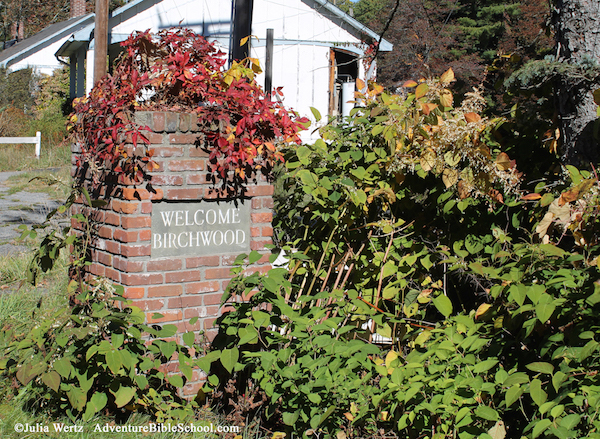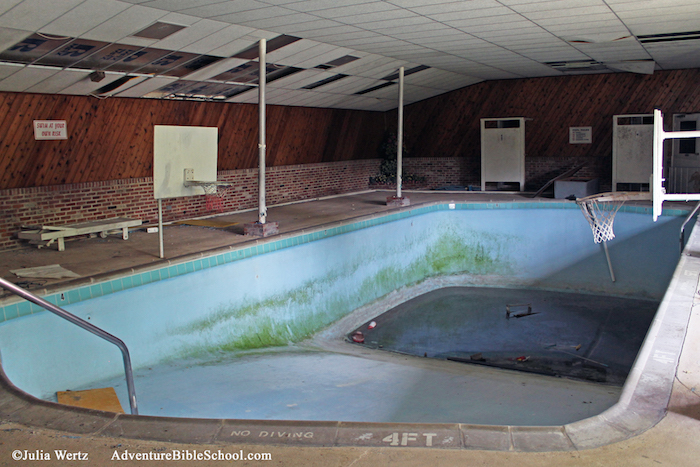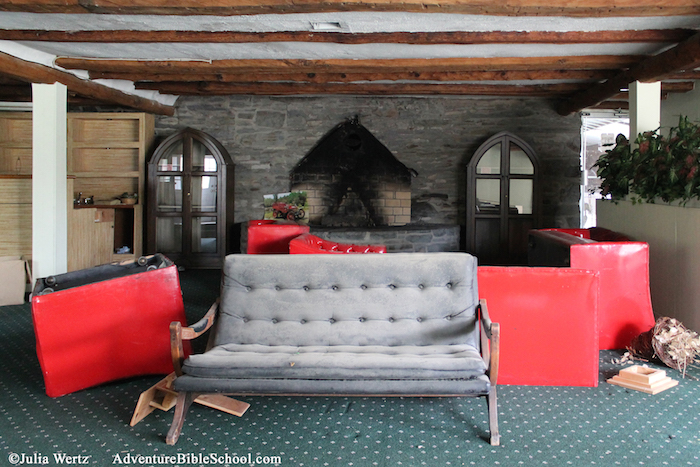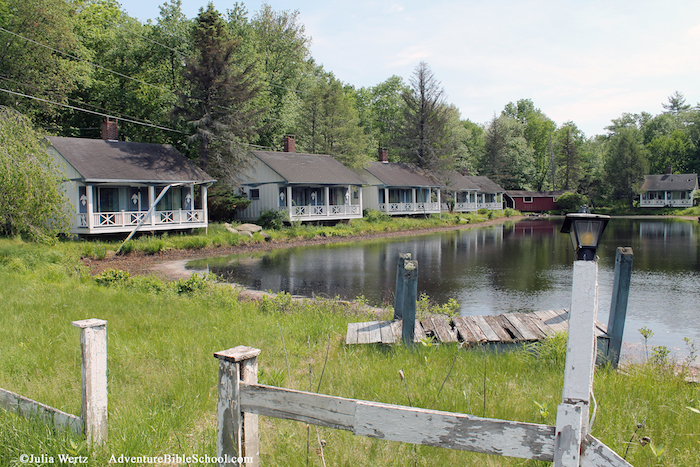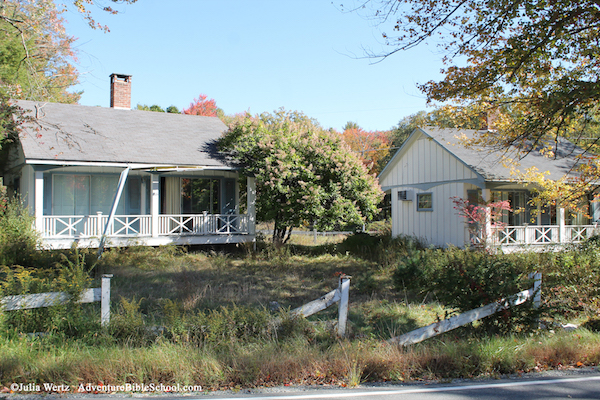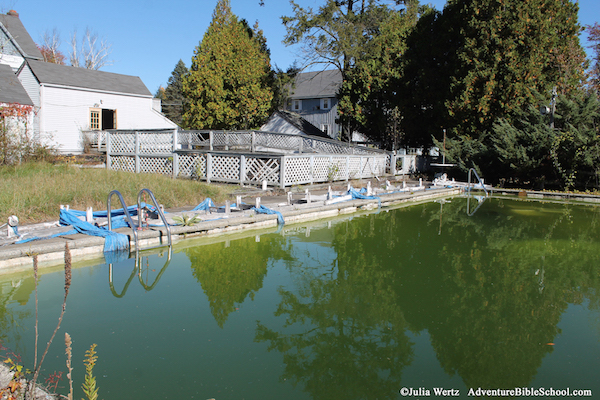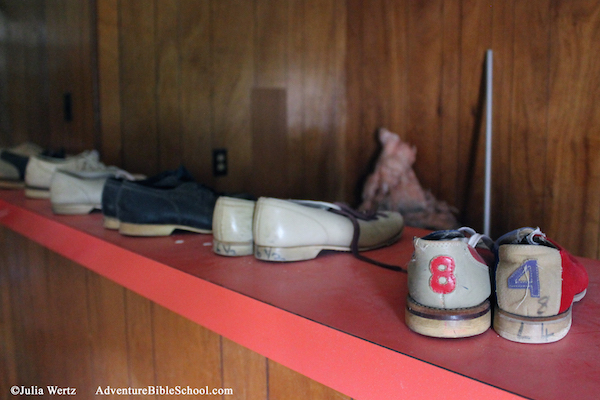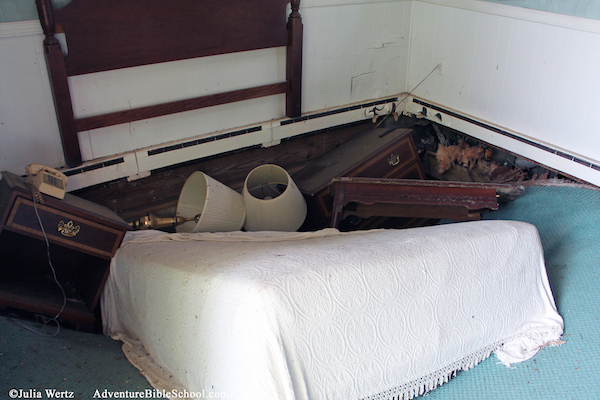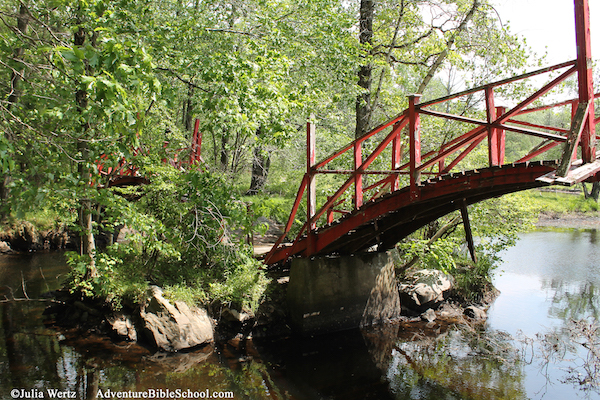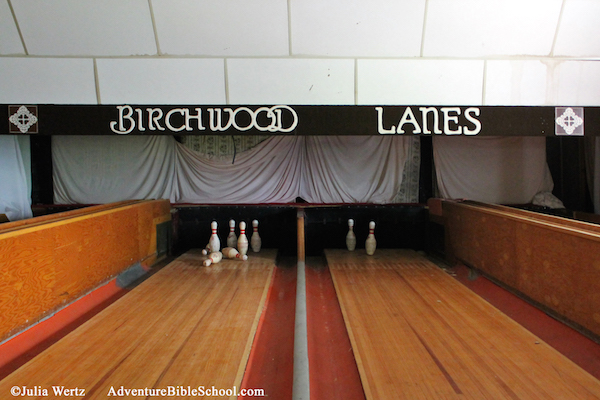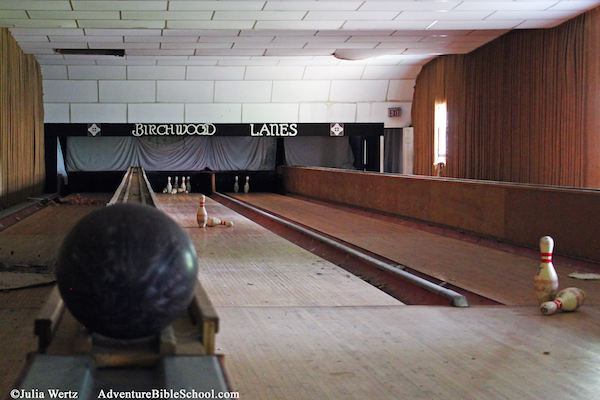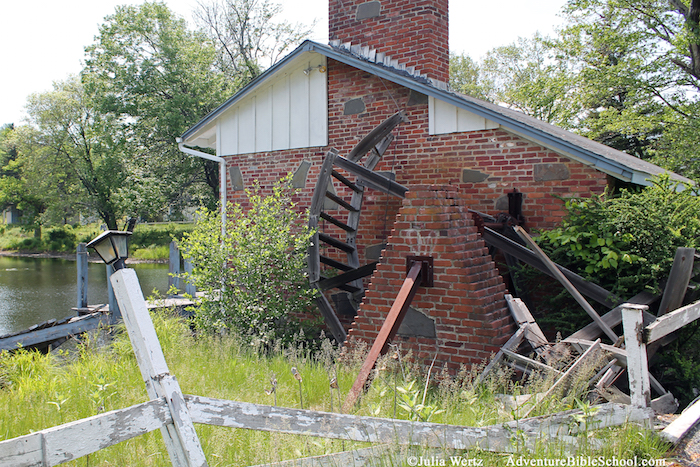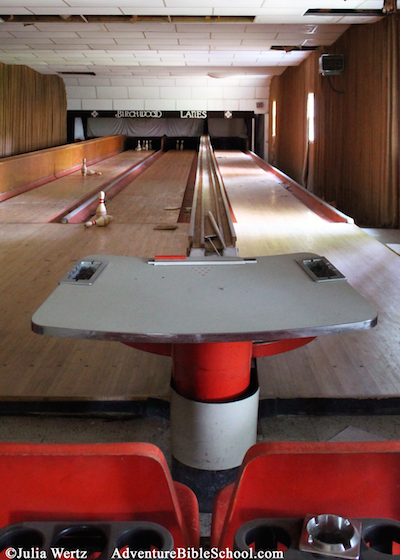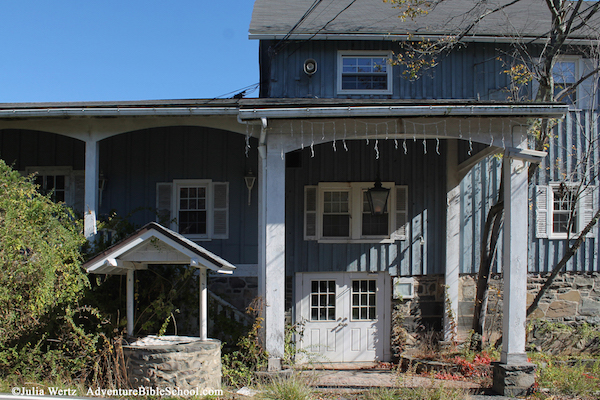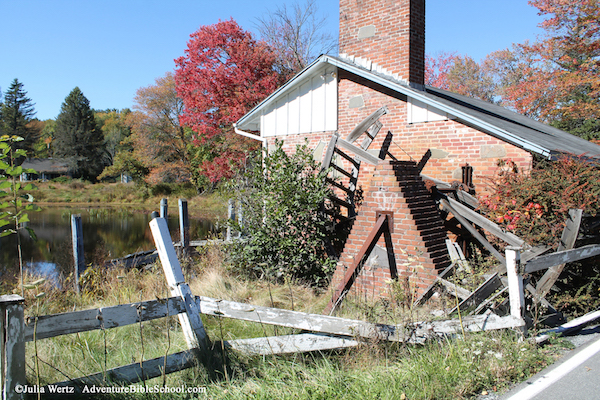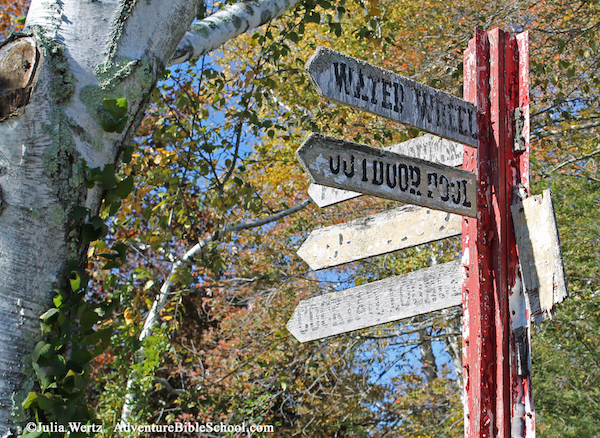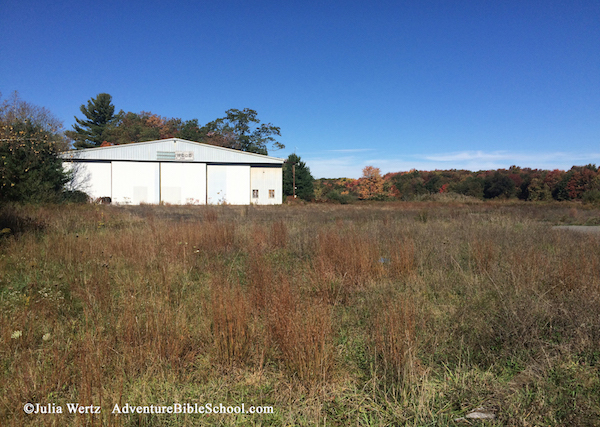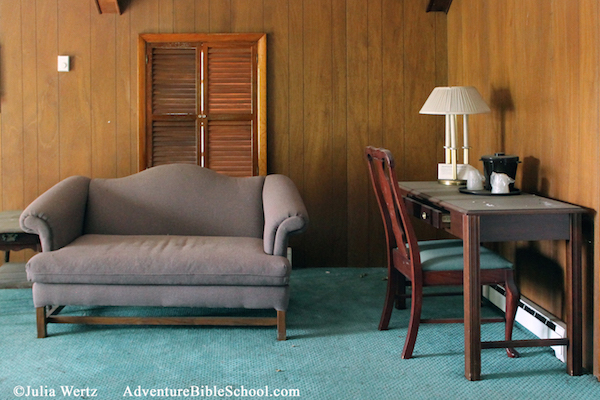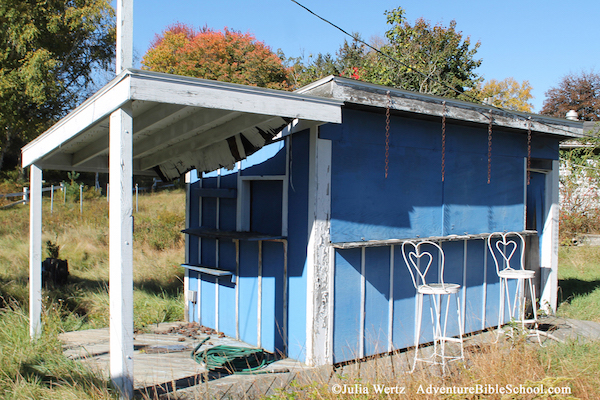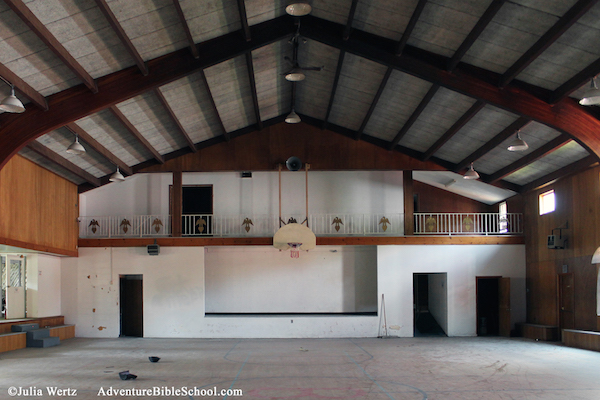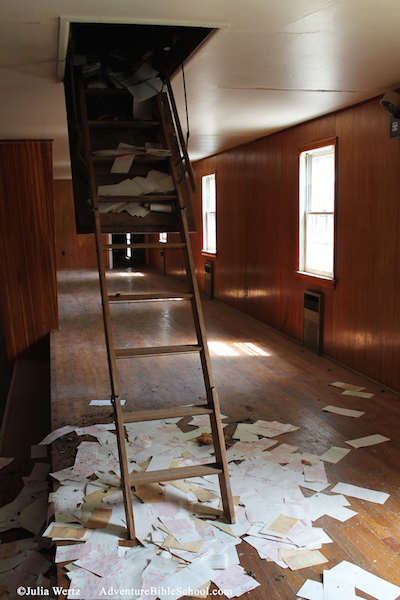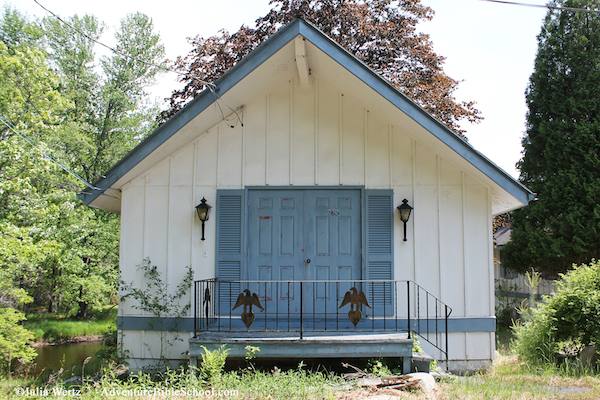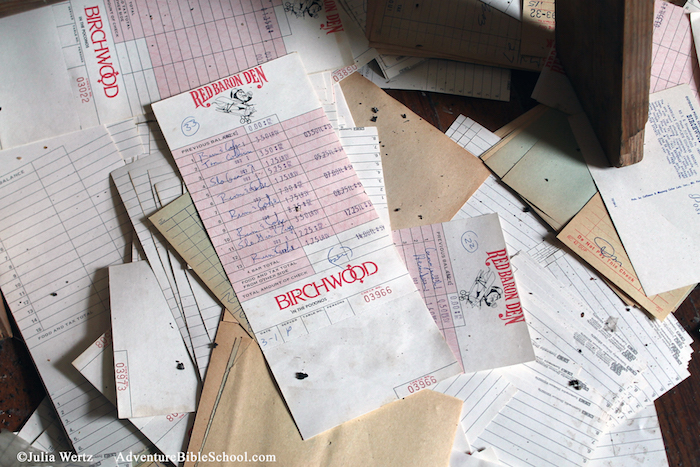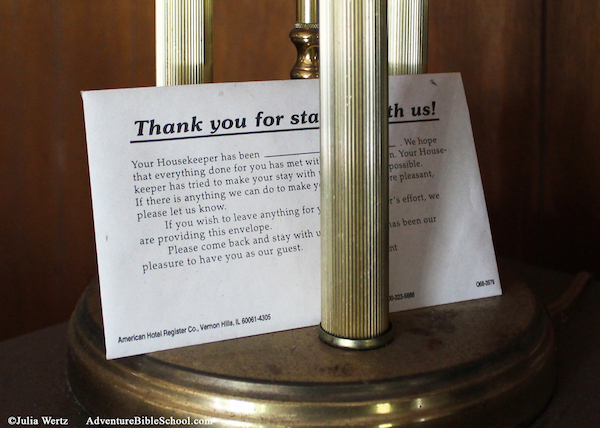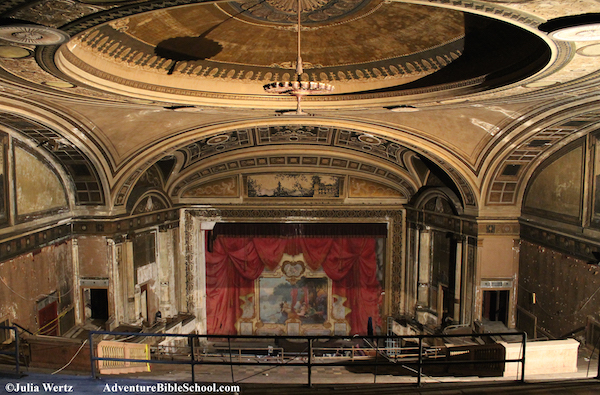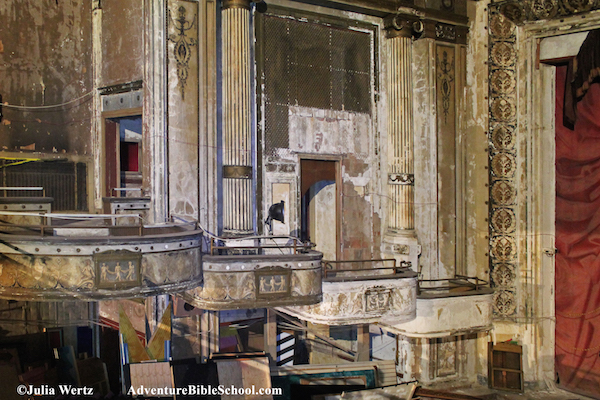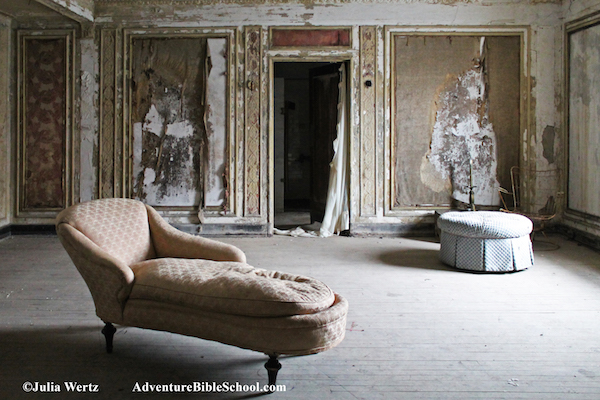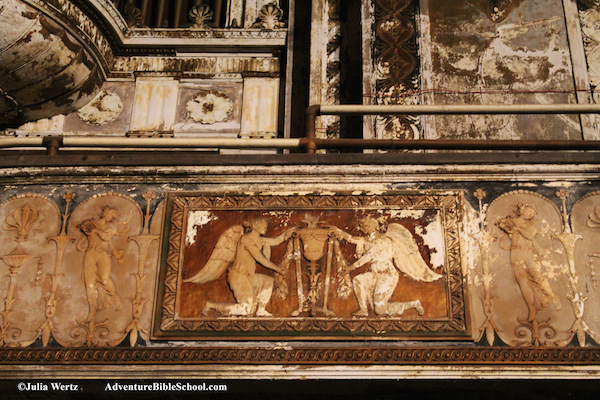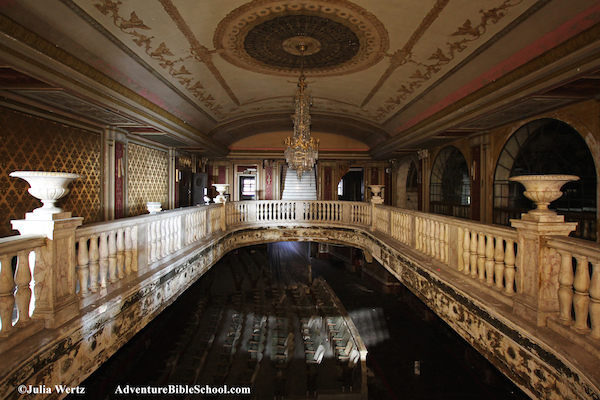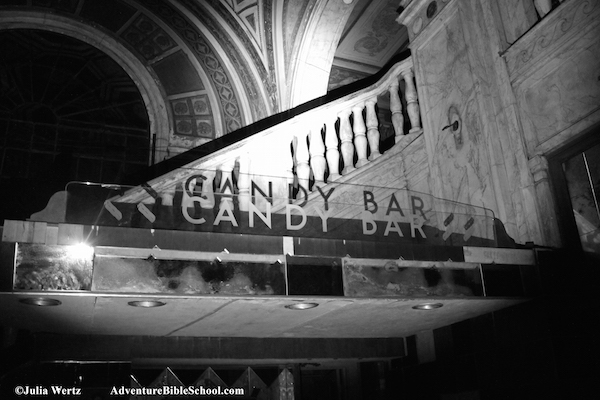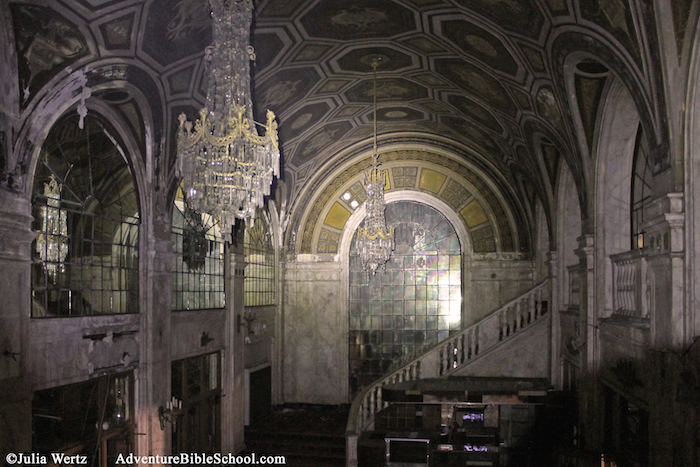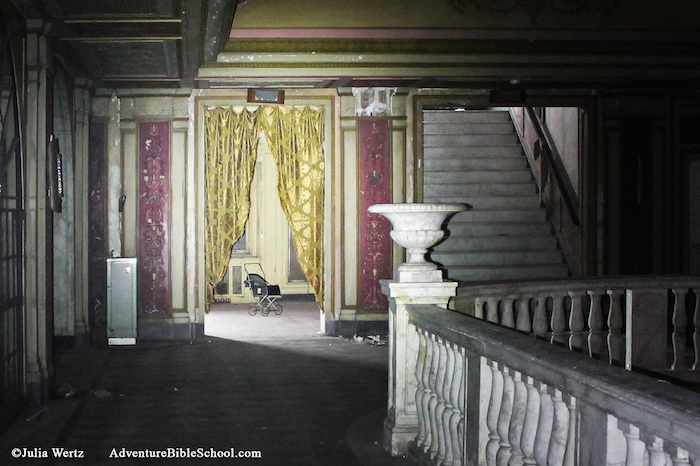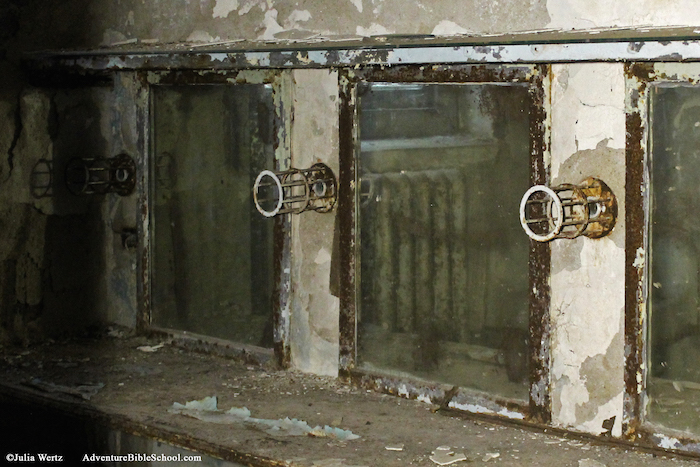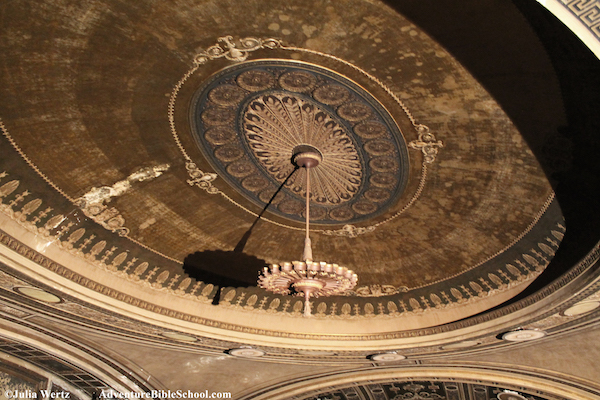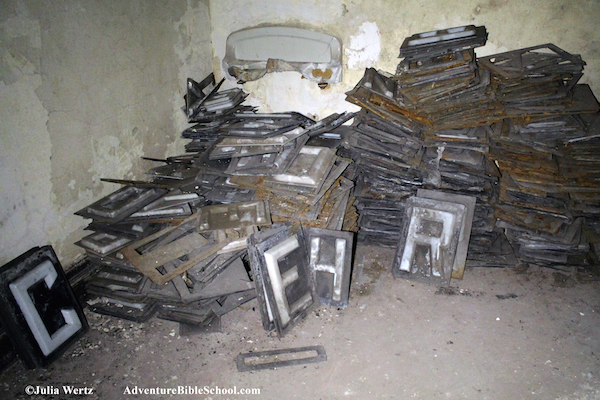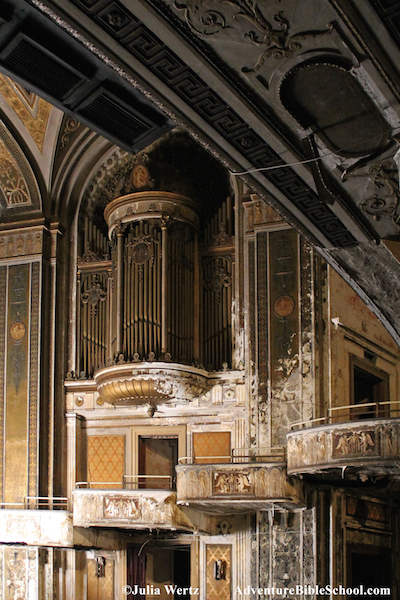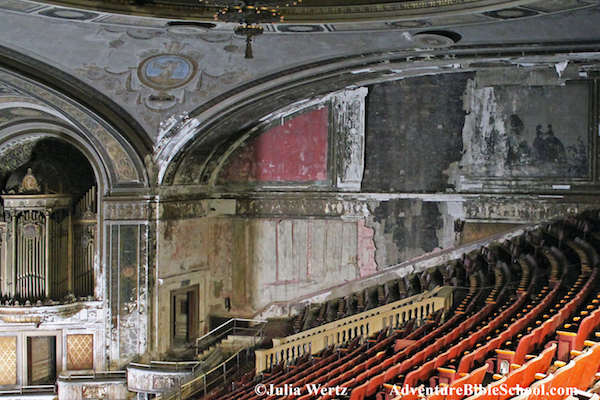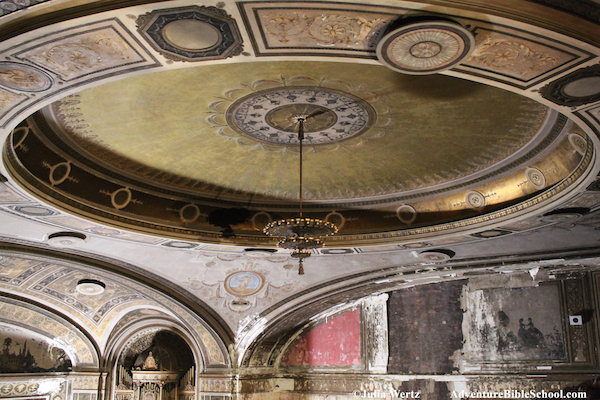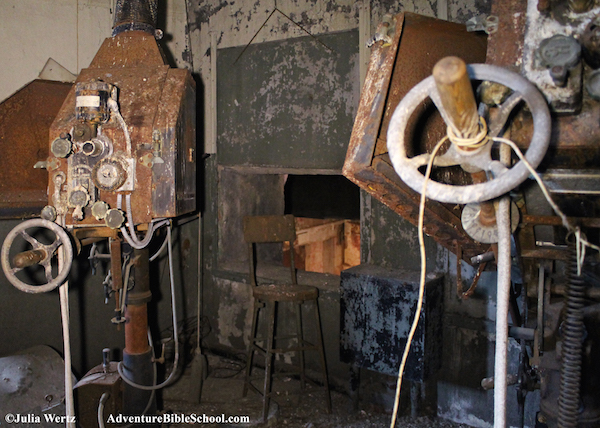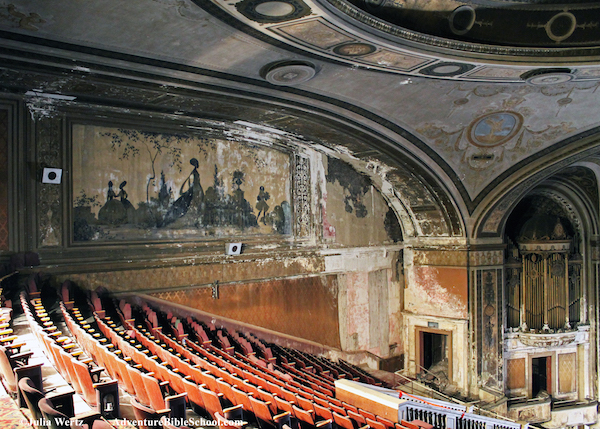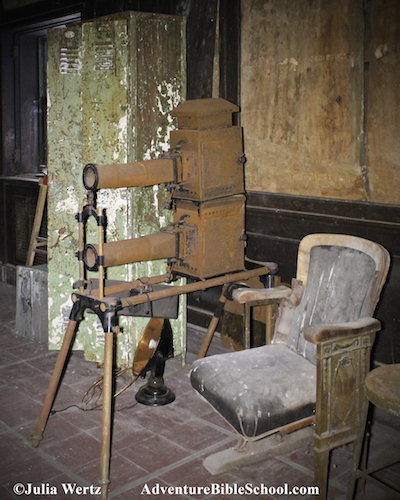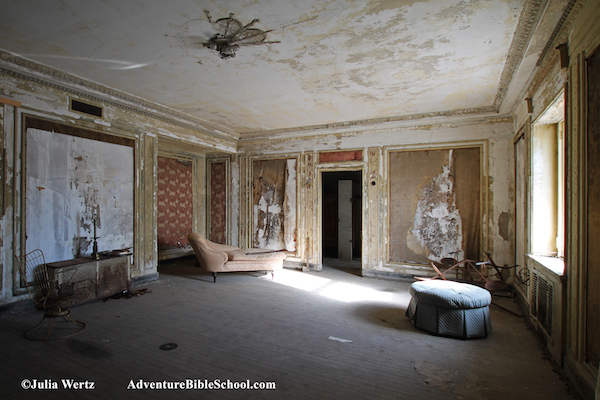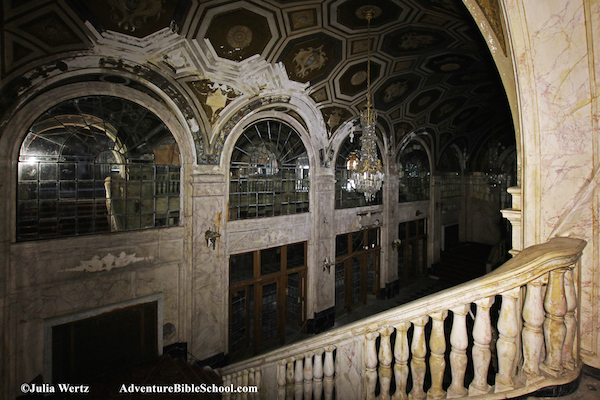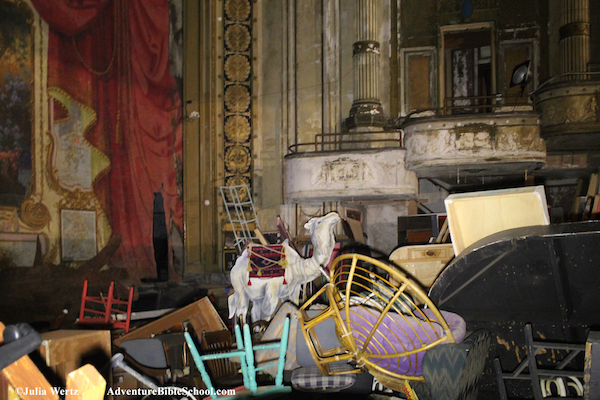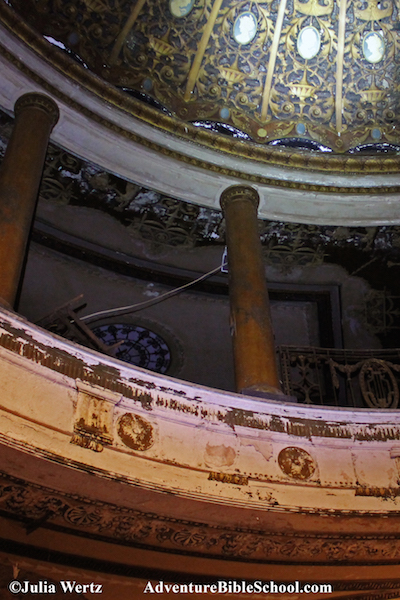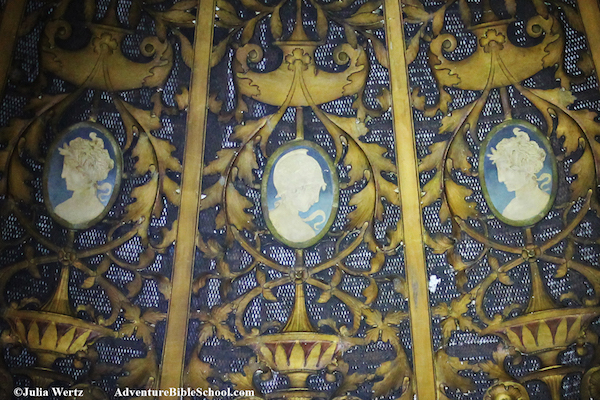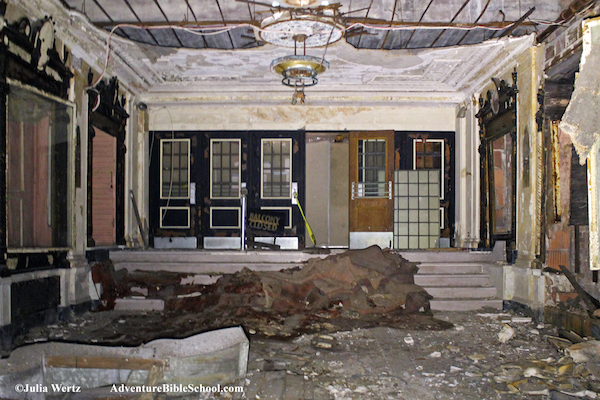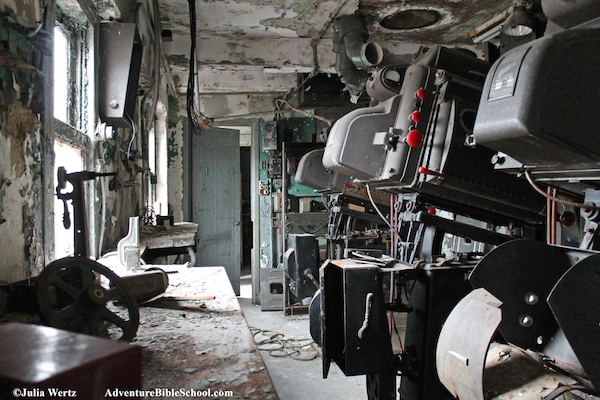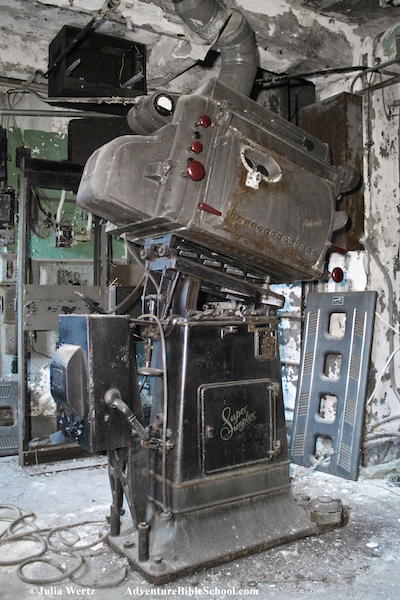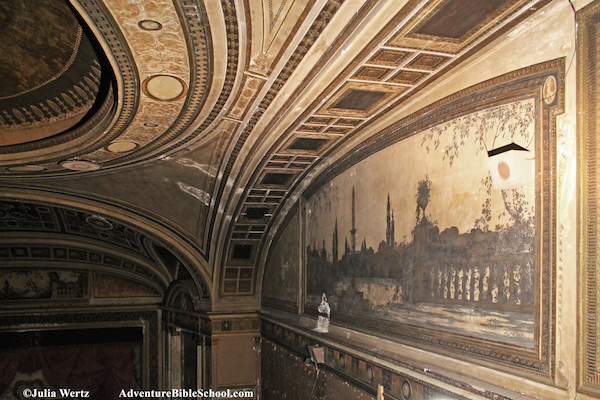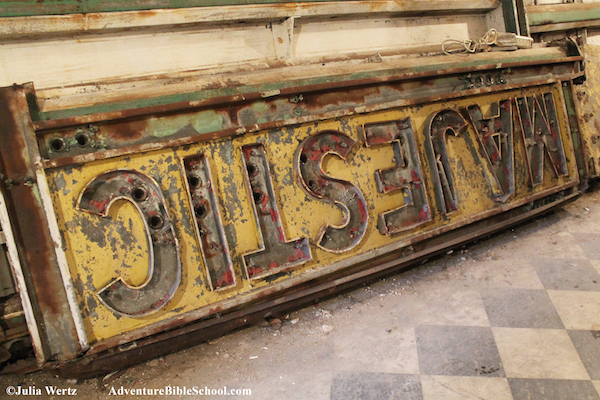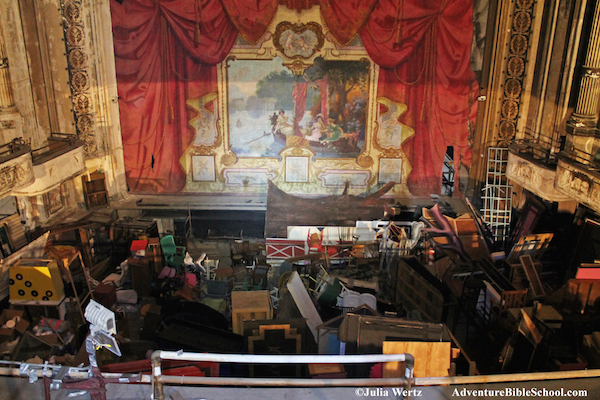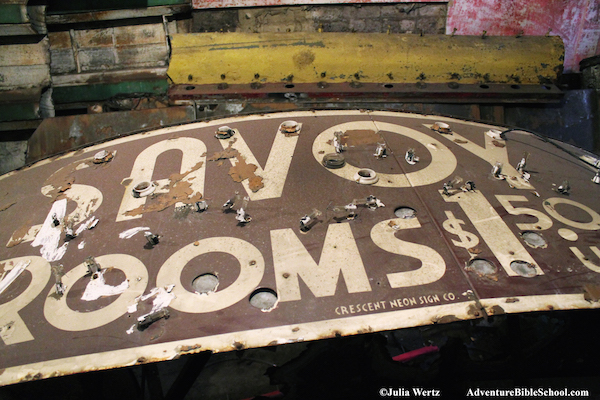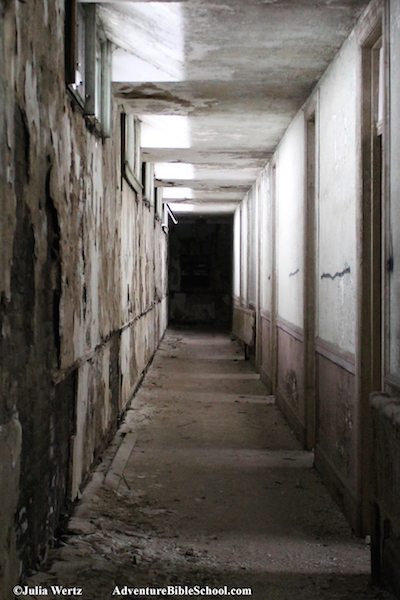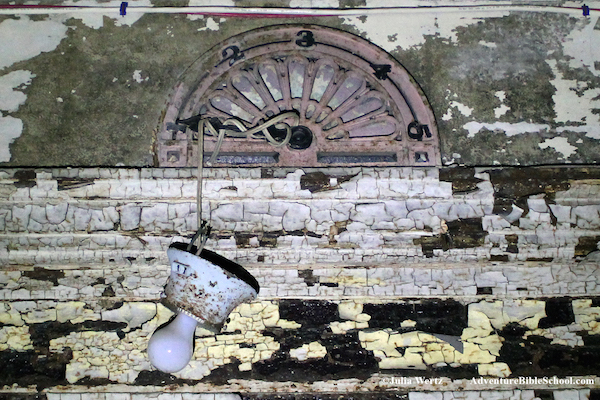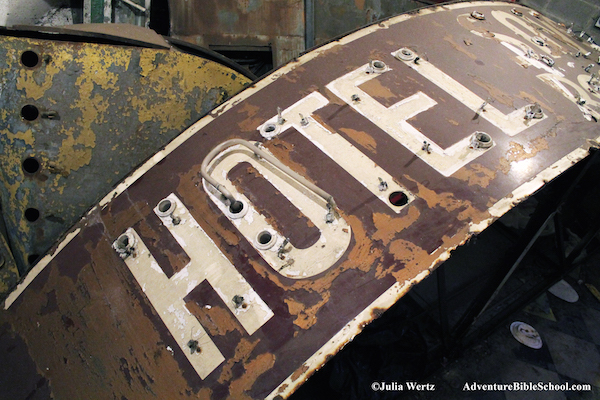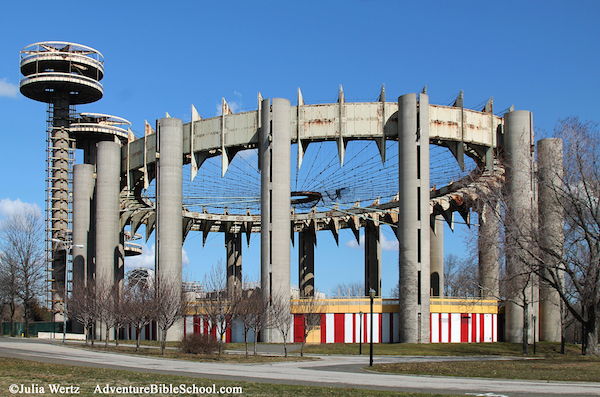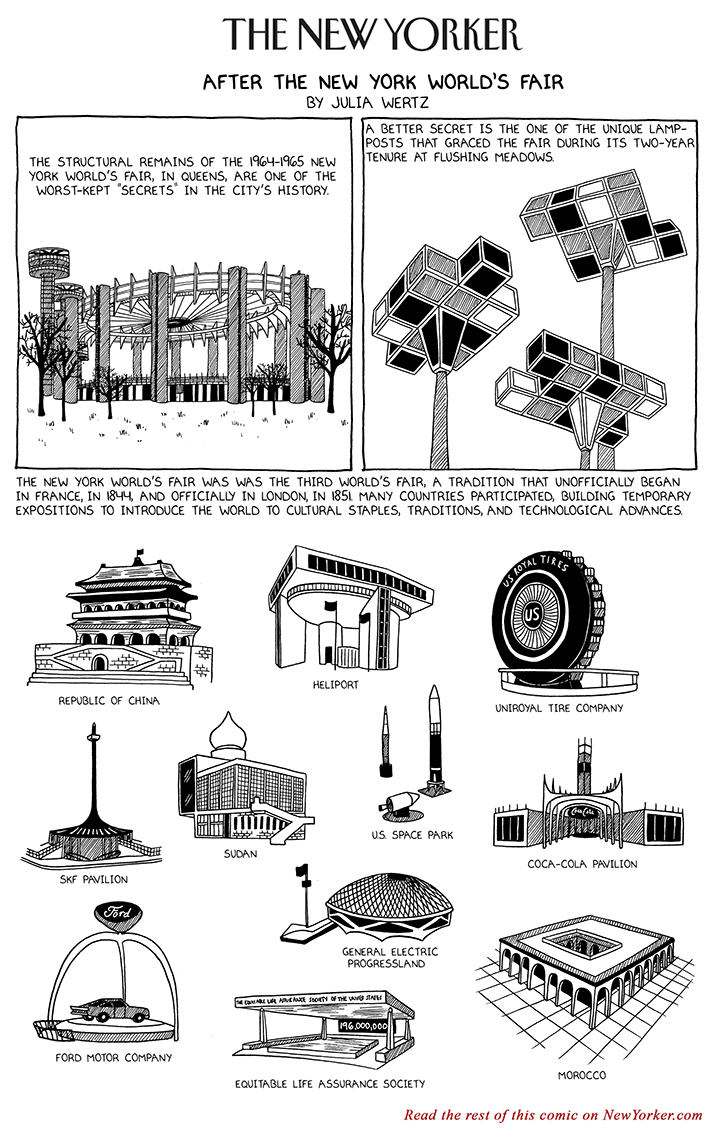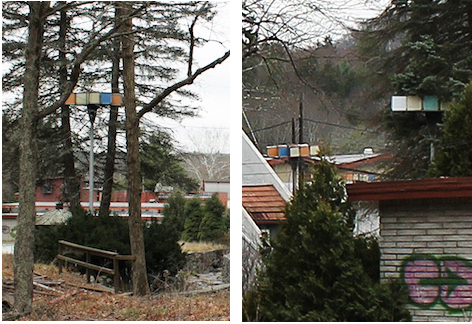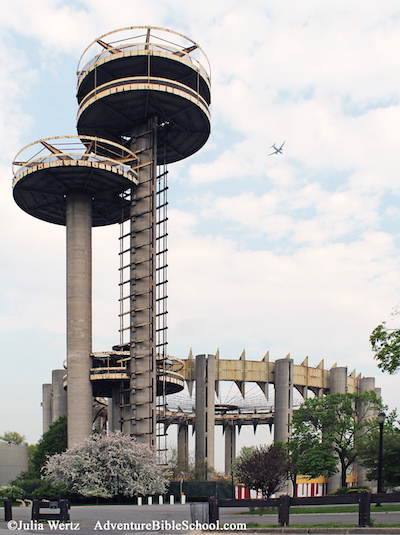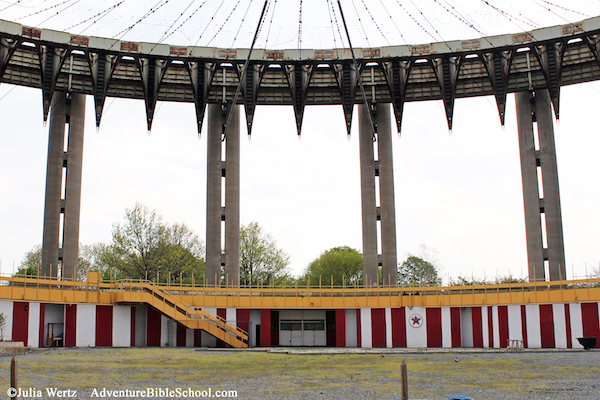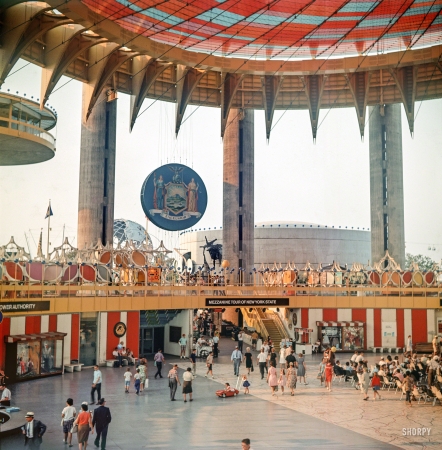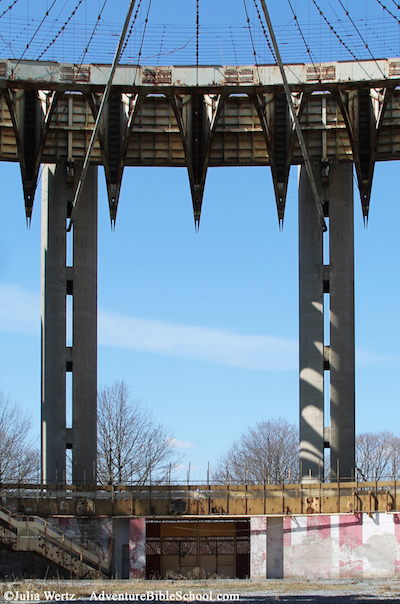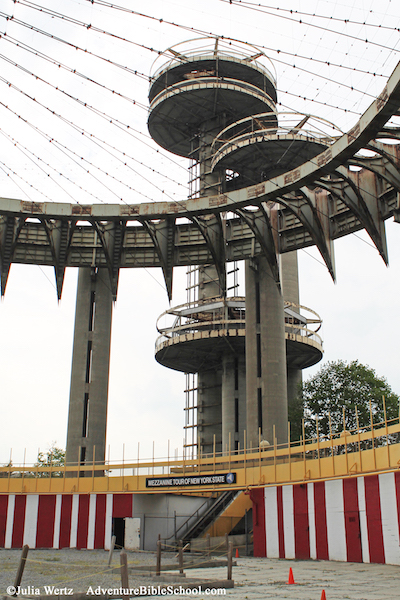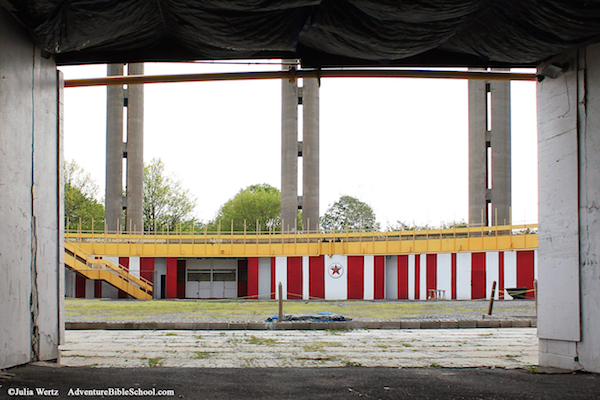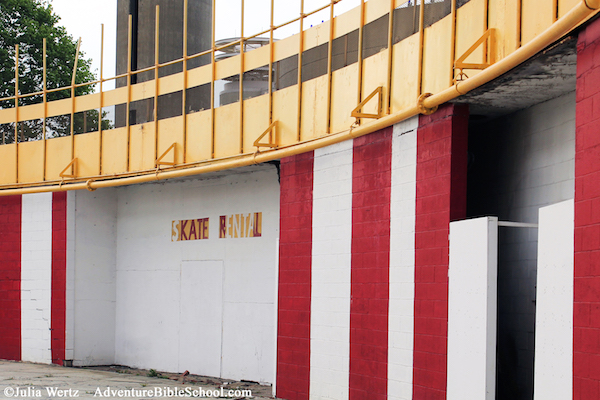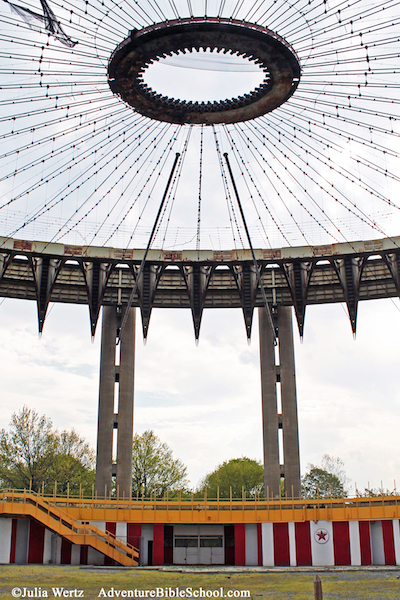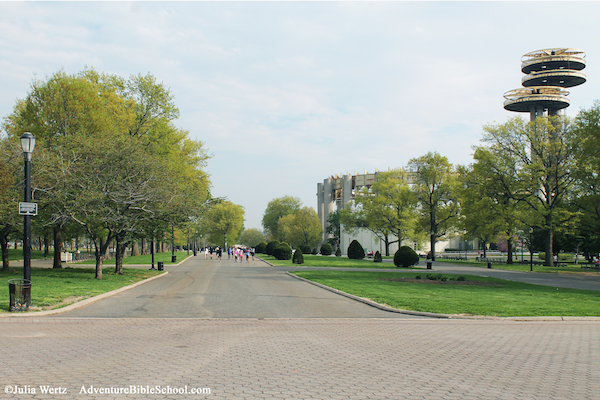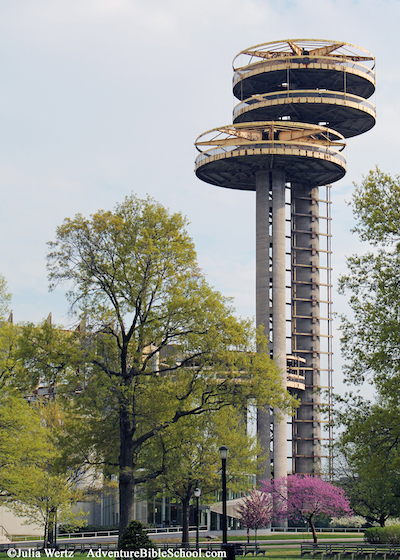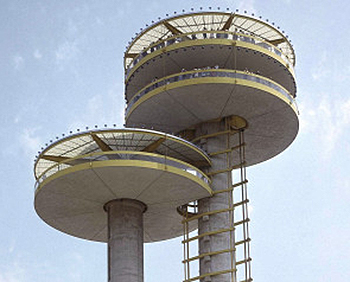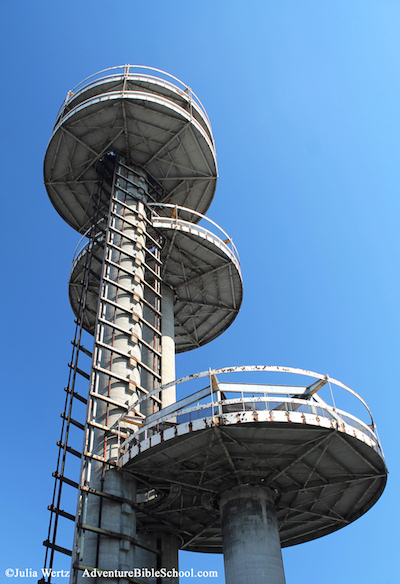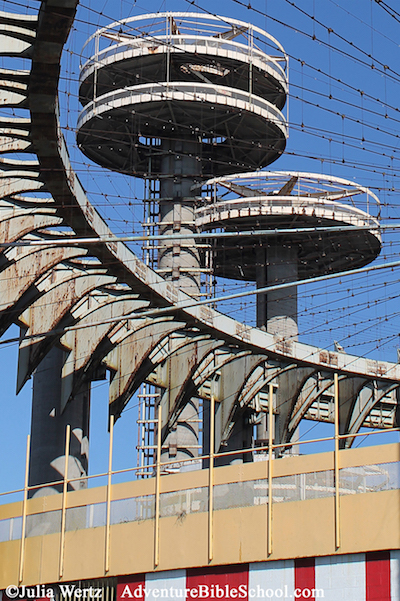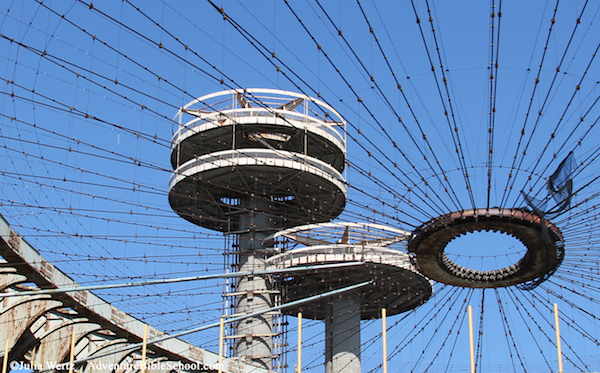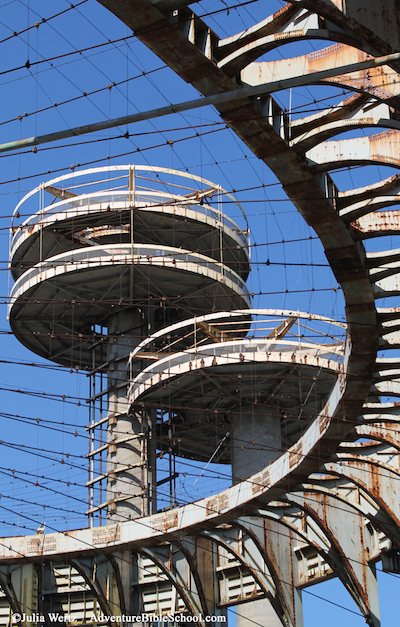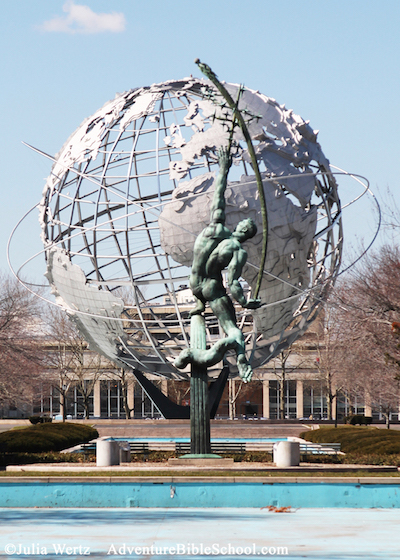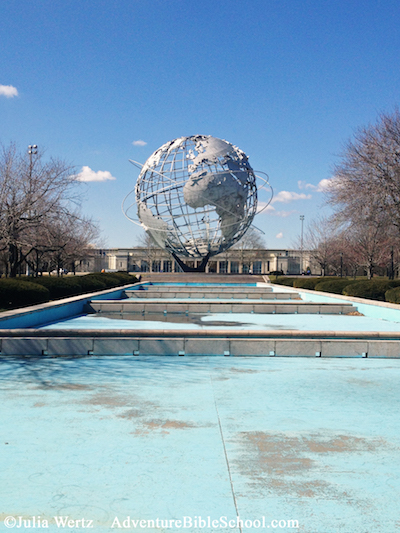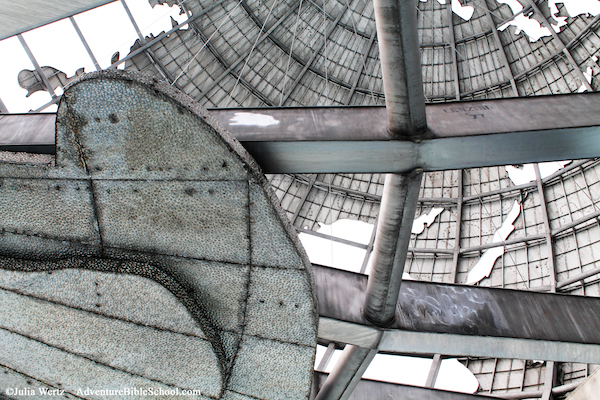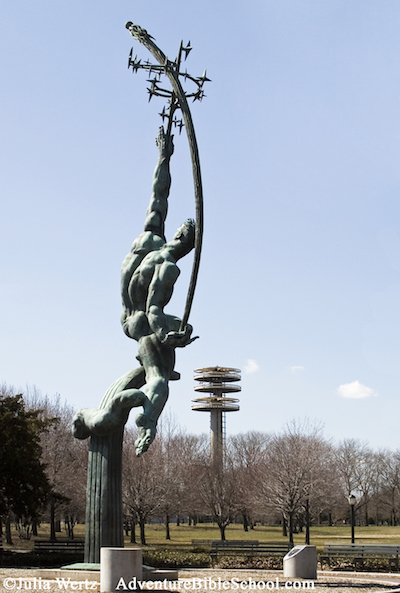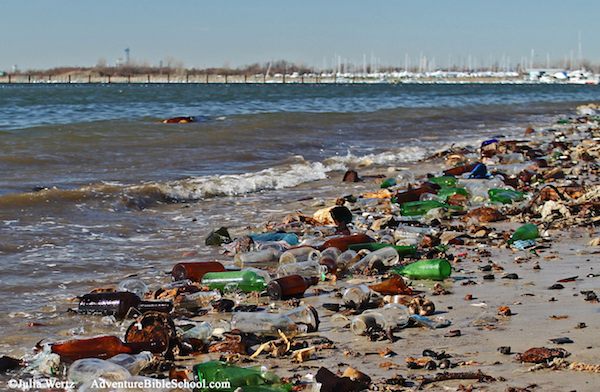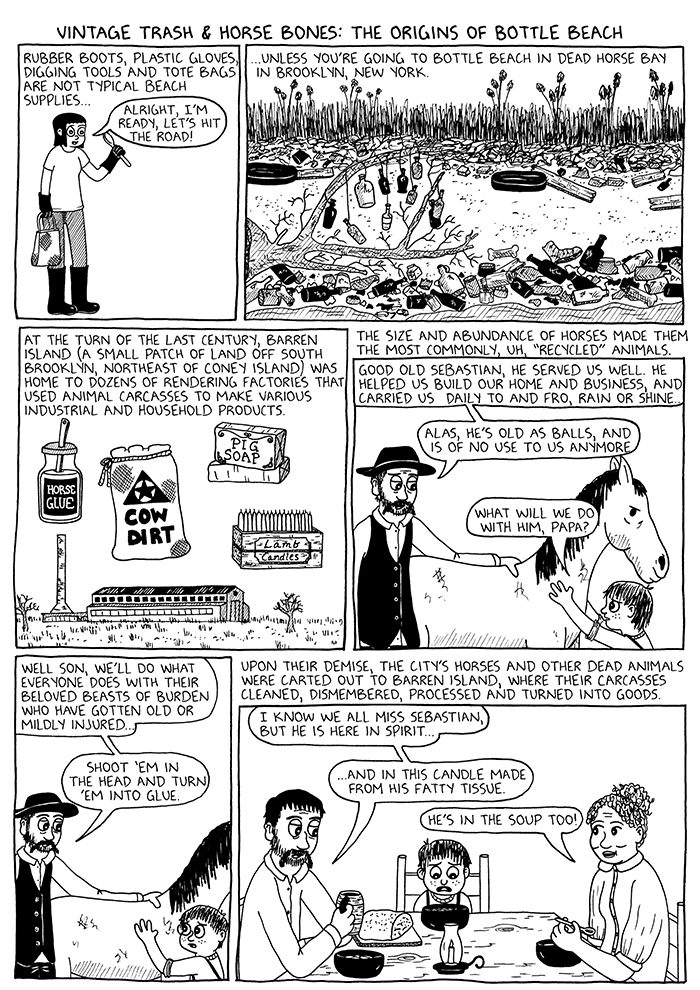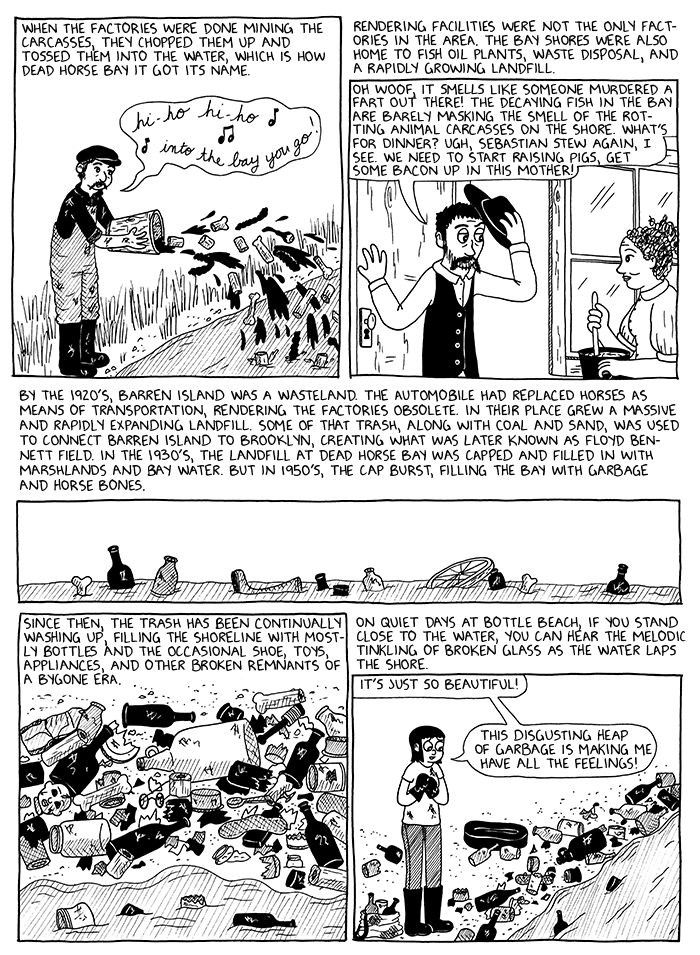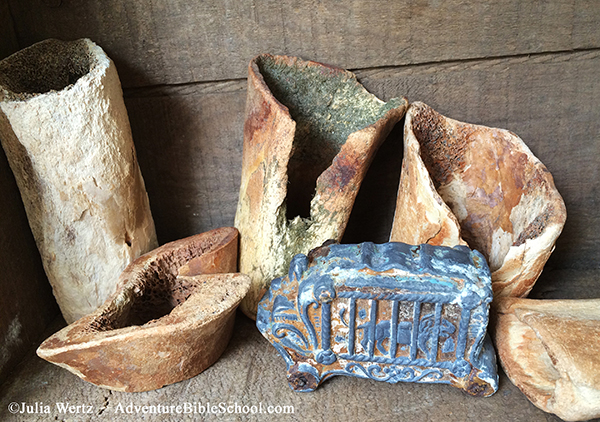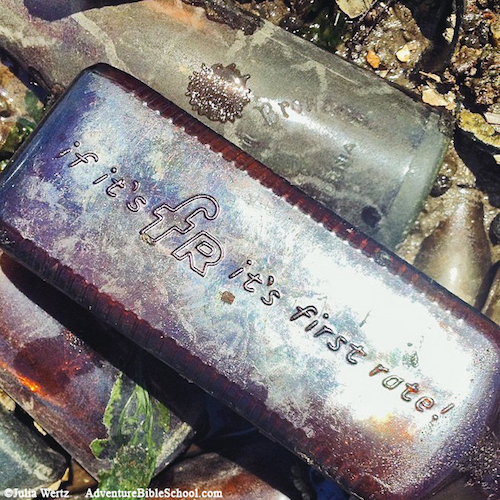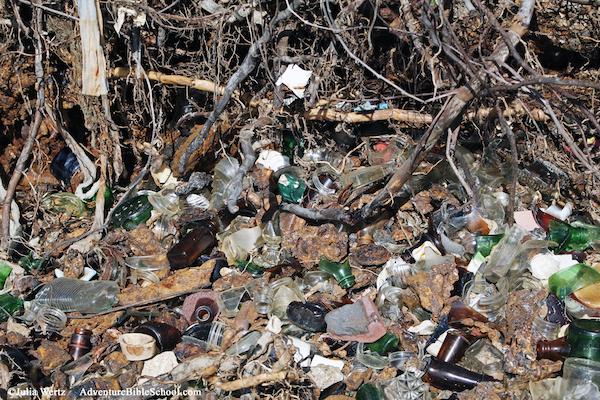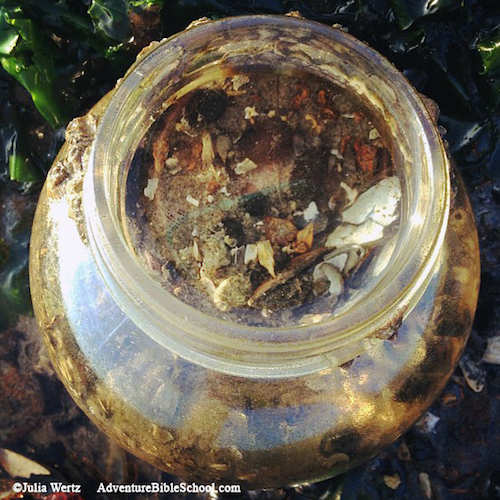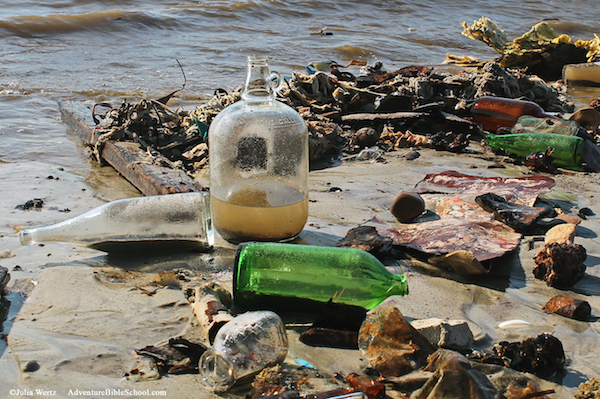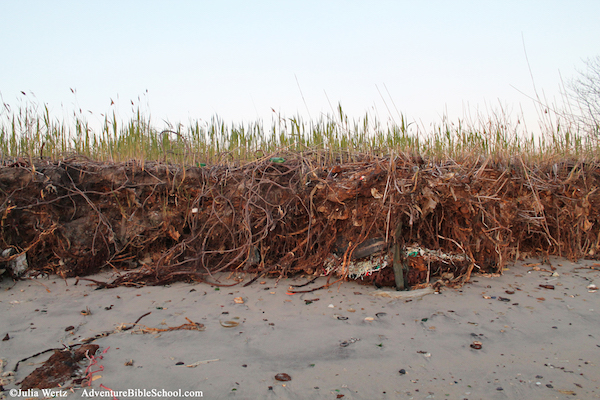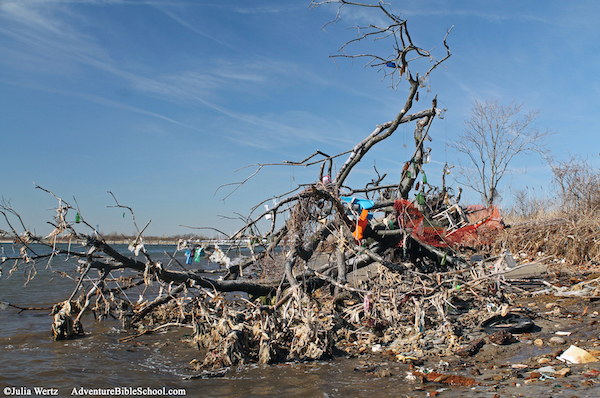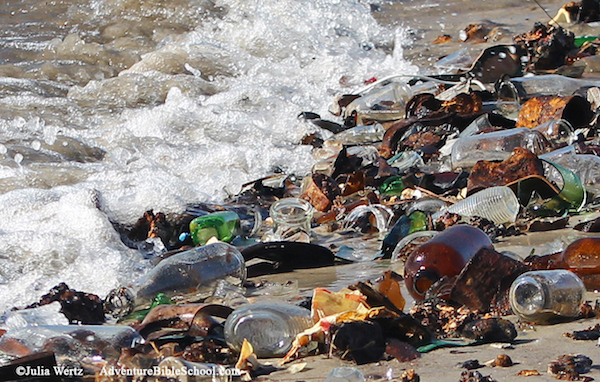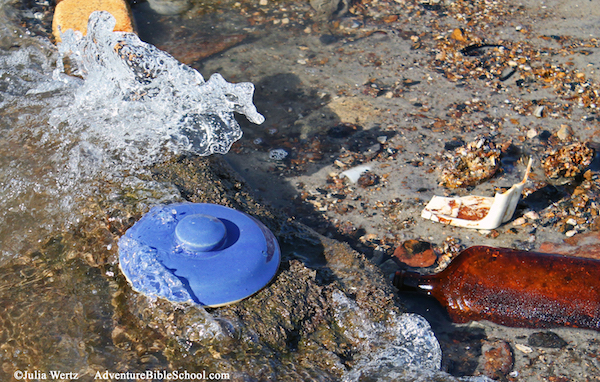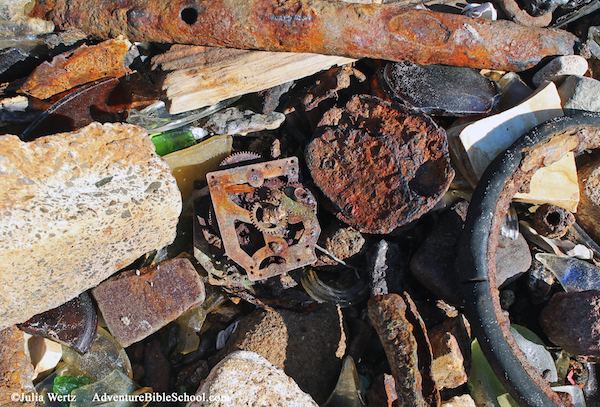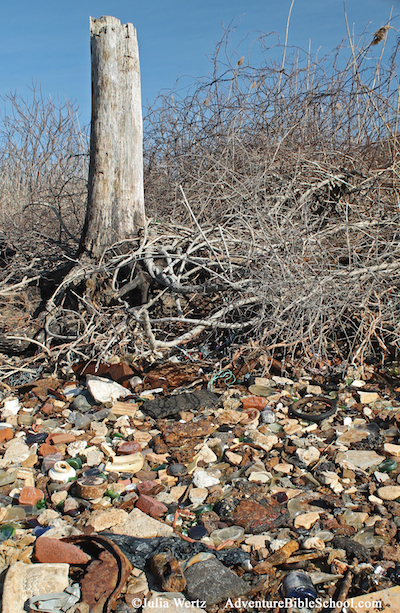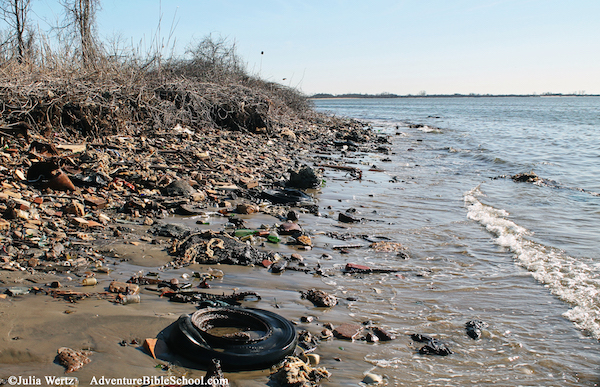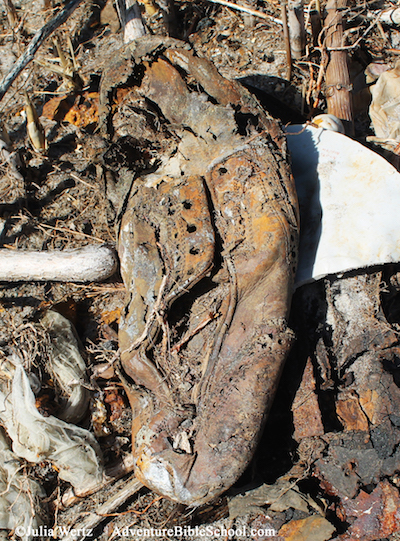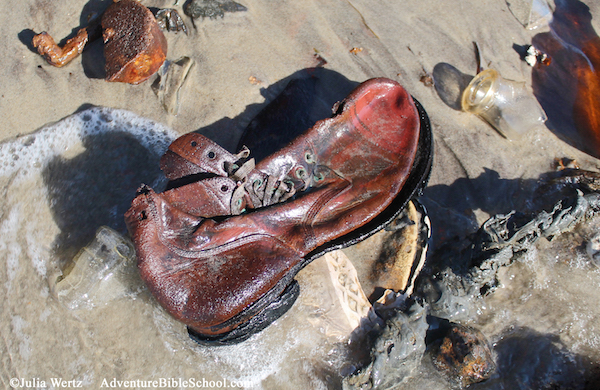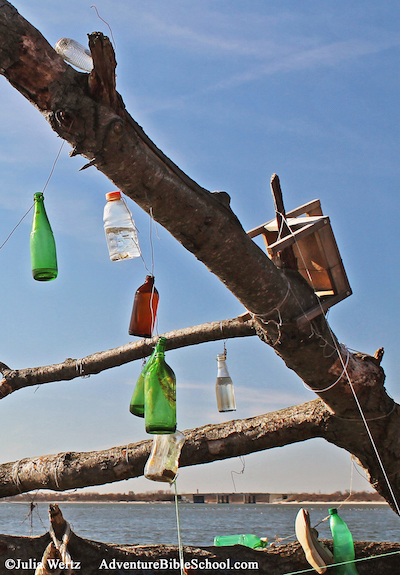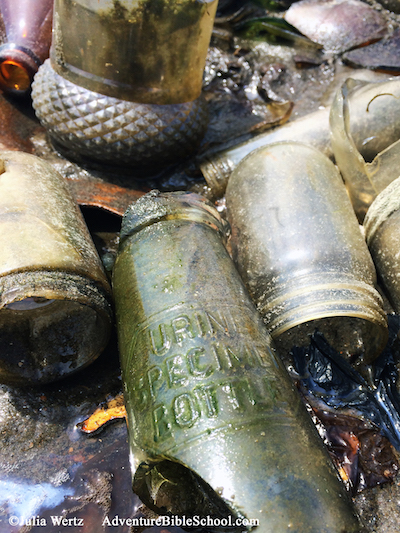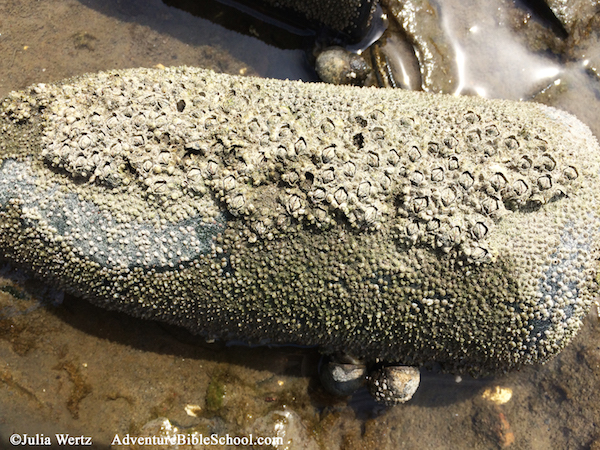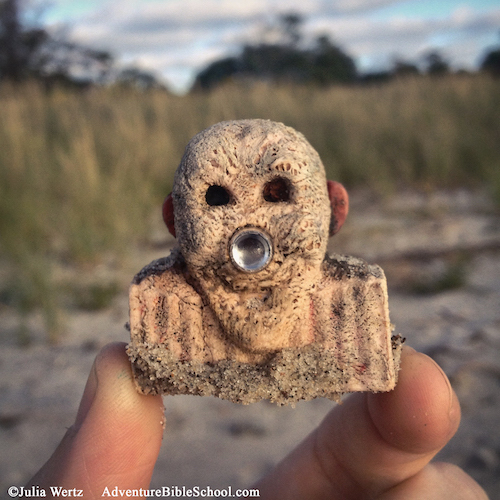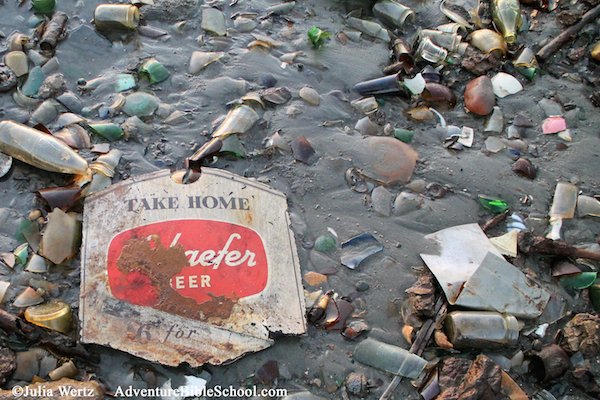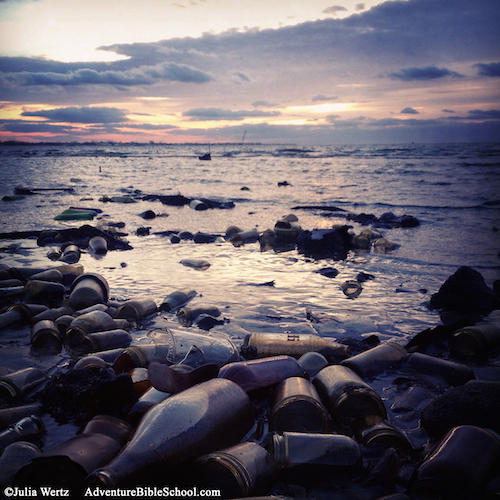The Baker Hotel, located in Mineral Wells, Texas, was a renowned luxury resort and spa that operated from 1929 to 1972. The history of the hotel is one of opulence and glamour as well as mysterious deaths and ghost stories, most of which I refuse to entertain on the grounds of nonsense. At 14 stories high, the hotel looms over the town in a Bran Castle-esk manner and upon its construction was considered the first skyscraper built outside of a metropolitan city. The hotel hosted numerous politicians and celebrities and was a rumored pit stop for Bonnie and Clyde.
At first blush, old promotional postcards could be understandably accused of embellishing the building’s prominence, but I assure you it was/is accurate. Unfortunately, I didn’t get very good exterior shots while there, and Google Earth 3D was hilariously unhelpful.
The Baker Hotel in its heyday.
The Baker Hotel now. Despite being abandoned for 40 years, the facade is in remarkably good condition due to its status as a historical landmark.
The Baker was the result of efforts by disgruntled Mineral Wells locals who were upset that outsiders were profiting from Mineral Well’s “magic water,” which I will discuss later in far too much detail. The residents wanted something they could run themselves, so they commissioned Theodore Baker to build a hotel similar to the two reputable ones he already ran in other cities.
Designed by Wyatt C. Hedrick, construction of the Baker took three years. It might have taken less time had Mr. Baker not halted construction because he decided the hotel should have a swimming pool, which seems reasonable considering the Baker was in the middle of the goddamn desert.
Construction of the hotel cost $1.2 million, which is about $13.6 million today. The last restoration proposal for the Baker in 2010 estimated a cost of $54 million, which is probably why it currently looks like this:
The hotel lobby in the 1930s.
The hotel lobby now.
As with all infamous hotels, the Baker has its requisite ghost stories. There’s the ghost of Mr. Baker’s mistress Virginia, who supposedly threw herself from the 7th floor when he dumped her. There are the ghosts of a young elevator operator who was crushed to death, a drunk woman who tried to jump into the pool from the 14th floor, the cook’s mistress who was stabbed by said cook, and so on and so on. Google the Ghost Hunter’s episode about the Baker Hotel if you enjoy intense irritation.
The Baker opened its doors just days after the stock market crash of 1929 and was bankrupt by 1932.* Despite financial difficulties, the hotel did well throughout the ’30s by catering to the upper class in nearby cities. It’s probably safe to assume that some of its success during the early years was contributed to rumored illegal gambling, as well as elicit liquor sales during prohibition.
*Sources are conflicted about this. No one seems to know for sure if the hotel itself went bankrupt in 1932 or if Theadore Baker went bankrupt in 1934 or a combination of both, but either way, there were money problems aplenty.
The hotel’s dining room and live music hall, called the Brazo’s Club, circa 1930s.
Guest rooms at the Baker featured extravagant new technologies such air conditioning, laundry chutes, and “an advanced hydraulic system that circulated ice water to all 450 guest rooms.” Doors to individual rooms had a key-controlled mechanism that turned the lights and fans on and off automatically, which sounds convenient but just imagine the numerous ways that could go wrong in a Benny Hill-esk manner.
Some before/afters of guest rooms.
And some random shots of rooms:
Despite the Baker’s celebrity cachet and rumored ghost stories, the most intriguing part of its history isn’t actually the hotel itself, but rather the town in which it’s located: Mineral Wells.
Mineral Wells used to refer to itself as “home of crazy,” in reference to the natural mineral water that made the town famous. It began with a story from the 1880’s about a well, a crazy old lady, and magic mineral water with healing properties; a trifecta of tall tales. Purportedly, the mineral water cured her “nervousness,” as it was called back then, and the water was soon declared a panacea for all ailments from arthritis to lunacy. This dubious claim put Mineral Wells on the map, but considering how people back then used to only drink whiskey and beer (as drinking water was often contaminated) it’s probably safe to say they got better just by drinking good old fashioned, clean, healthy water.
The town flourished in the early 1900s due to a mineral water craze, which they capitalized on with their ‘crazy water’ and became home to over 20 mineral water companies, bathhouses, resorts, spas, and hotels, the most ostentatious being the Baker.
In 1914, pharmacist and head of the Famous Mineral Water Company, Ed Dismukes, created “crazy crystals,” which were essentially the remnants of boiled mineral water. Throughout the ’20s and ’30s, Crazy Crystals were marketed as yet another disease cure-all when added to regular water. Crazy Crystals were especially renowned for the treatment of ‘colon ailments,’ which makes sense when you consider what Crazy Crystals actually were: salt. If you mix enough salt with water and drink it, it’ll give you wicked bad diarrhea. I learned this after I got caught in a riptide at Ocean Beach and swallowed tons of saltwater and spent the evening enduring a surprise colon cleanse.
In 1940, Crazy Crystals were debunked by the FDA, which issued Dismukes a cease and desist in regards to his falsified claims of the crystal’s curative powers. Dismukes was able to continue selling Crazy Crystals as long as he didn’t make any more claims about their efficacy, but without the promises of health and eternal youth, their popularity dwindled. The hype around mineral water, crystals, and spas rapidly declined in the ’40s and ’50s, aided by a new magic now commonly known as ‘modern medicine,’ primarily penicillin. (The history of experimentation with penicillin is somewhat horrifying, but this is neither the time nor place for such a tangent, being that I’m already on one.)
Various forms of Crazy Crystals still exist today- such as Epsom salts- marketed more appropriately as bathwater skin softeners and laxatives. You can actually still order and consume “Crazy Water” from Mineral Wells.

In the 1940s, the general public denounced the magic of mineral water and moved on to other dubious health fads such as vitamin D enhanced Schlitz beer and the ‘cigarette diet,’ for which one of the many slogans was “reach for a Lucky instead of a sweet!” Doctors also began prescribing the sun as a remedy for countless ailments, and the Baker was at the forefront of this trend.
Along with cigarettes and booze, the sun became the zenith of cures, and spas began marketing ‘ultraviolet ray therapy,’ commonly referred to as heliotherapy and now known as skin cancer. Light therapy is still around, but modern treatments filter out ultraviolet light, which we all know is bad and makes you look old as balls.
Hotel spa & solarium.
Solarium “sun bed.”
Solarium sun beds and whatever the hell that thing with the elevated foot rest is.
‘Valet doors’ (what they called the laundry chutes) and the colonic irrigation room.
The chair in which one would recline whilst having one’s colon irrigated.
Photo from an ad about the spa services offered at the hotel.
The spa at the Baker touted the use of the “electric cabinet,” which sounds like a safe and fun thing to lock your body inside, no? While you sit inside the ‘cabinet,’ steam is supposed to cleanse your filthy, disgusting body of all its toxins.
I love how this cartoon ad for the Baker spa describes it as being “scientifically toasted,” and claims it’s an “antidote for the jitters.” Toasted! The jitters! Mental and physical instability was pretty cute back then. Call me a rube, but I had no idea these things existed outside of cartoons (when a fat guy goes in and comes out a skeleton!!!) but they do, and they’re called “sitting steam bath chambers.” When you look them up on the internet, they’re mostly only a thing in Sweden and Thailand, which sounds about right. Here in America, we like to sweat it out in saunas filled with staph infections and other peoples’ farts.
A spa ‘recovery’ room, which sounds redundant until you consider everything I just described.
After thriving in the 30s, the Baker began a rapid decline, revived only briefly during WWII when a military base opened nearby and soldiers and their families made temporary homes of the hotel. Interestingly, the hotel had many tiles that looked like this: (screenshot from Ballad of the Baker.)
But before you get your knickers in a twist, the tiles were put in place before this symbol represented Nazi Germany. Prior to WWII, the symbol was used with positive intention for over 3,000 years by different cultures. Then Hitler adopted/ruined it for forever. In the context of the Baker, it was used as the Navajo symbol for the sun. (I trust I do not need to point out why that was pretty fucked as well.)
Rooftop penthouses overlooking Mineral Wells.
The Baker Suite then & now:
A view of the Baker from 100 3rd ave in olden times and today. The current one is a google maps screenshot since I didn’t have any ‘before’ photos when I visited the Baker. I just got extremely lucky with the ones I posted here. If you take a gazillion photos, at least 5-10 will match up pretty well.
The driveway/courtyard then and now:
Hotel lobby then/now:
A lot of the original moldings in the lobby are still somewhat intact, or at least partially visible. Here are a few mediocre images I threw together since I didn’t have time to take close-ups of the details. There was a little kerfuffle involving us almost getting trapped inside the building as workers sealed up all the entrances and exits while we were still inside.
Old photos of the Baker on this post are from the Baker Hotel, Crazy Water and google images from defunct ebay sales. You can see my full set of the Baker Hotel photos on flickr.
Disclaimer: If any information is incorrect, if you have more info, or if you’d just like to tell me something, feel free to contact me.
To support my work and see new comics, go here. To buy books, original artwork, merch, and more, visit my website store. Follow me on instagram.
